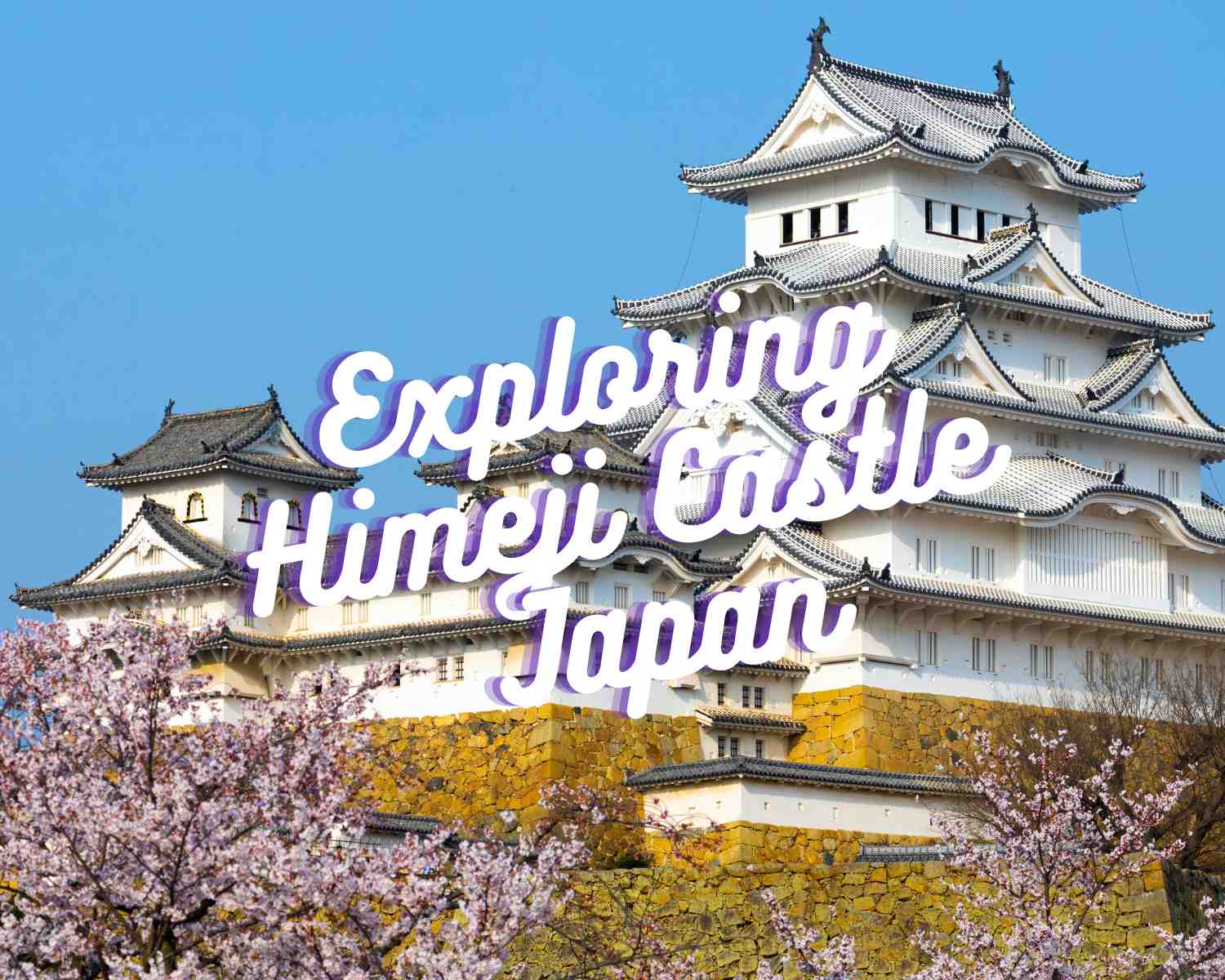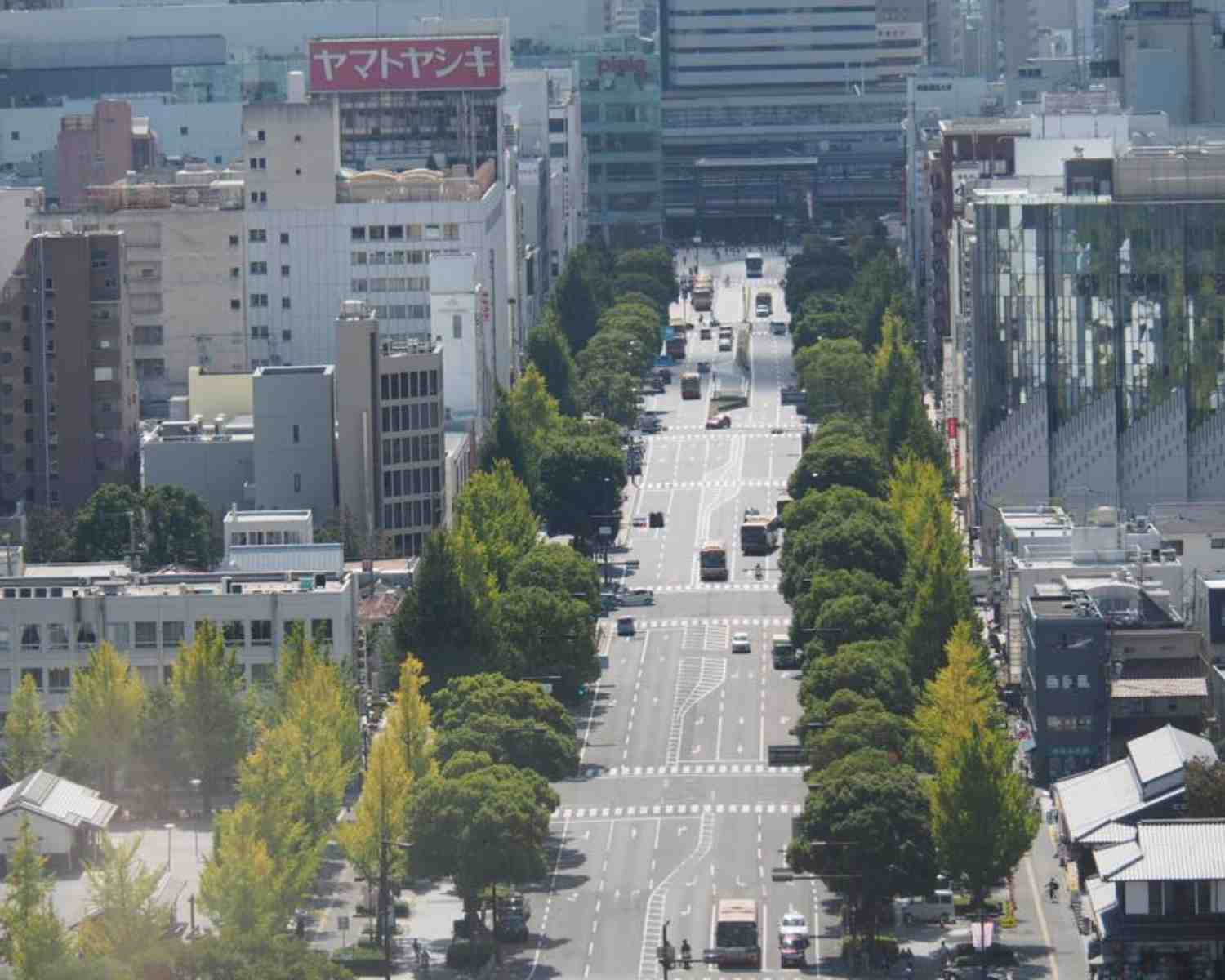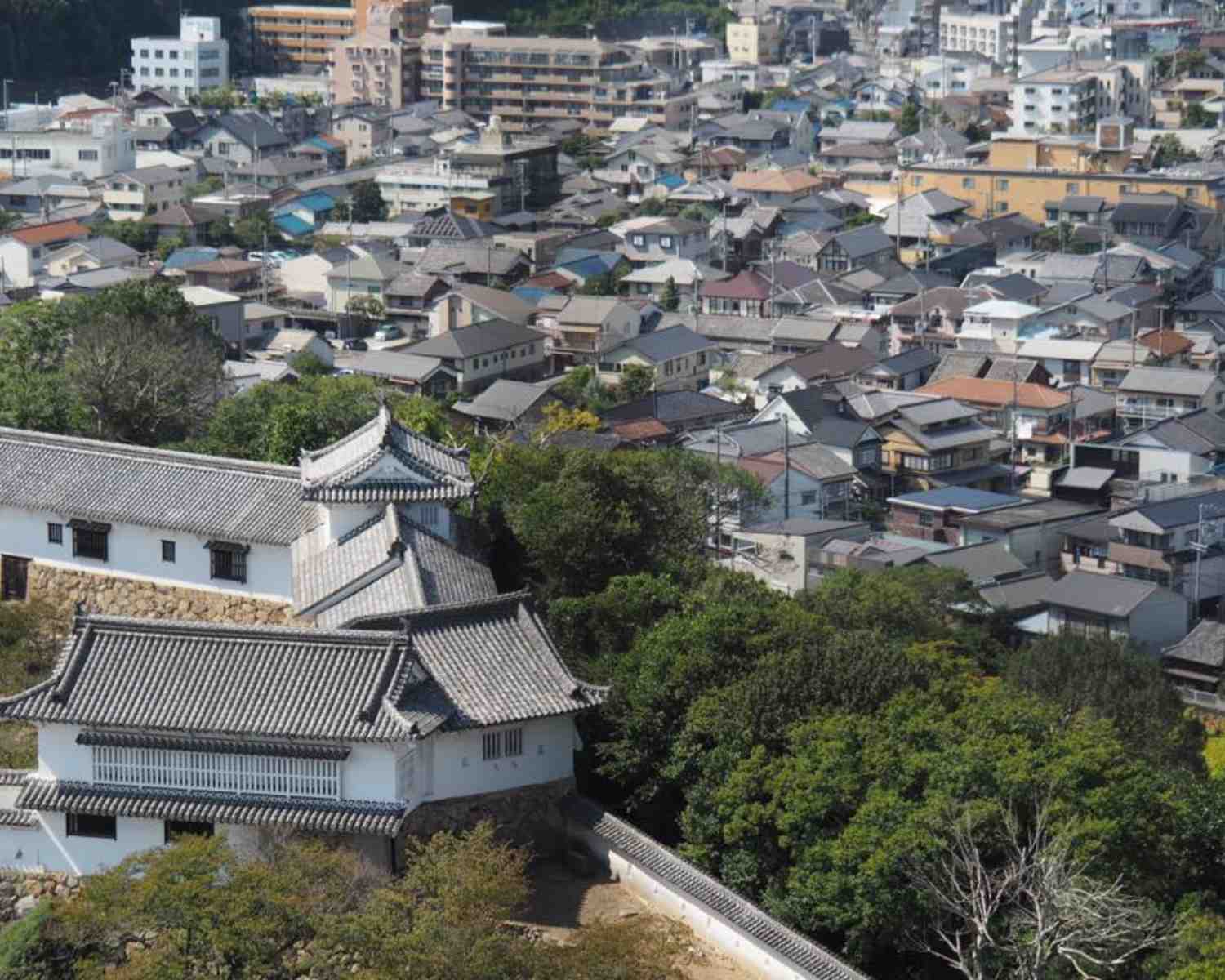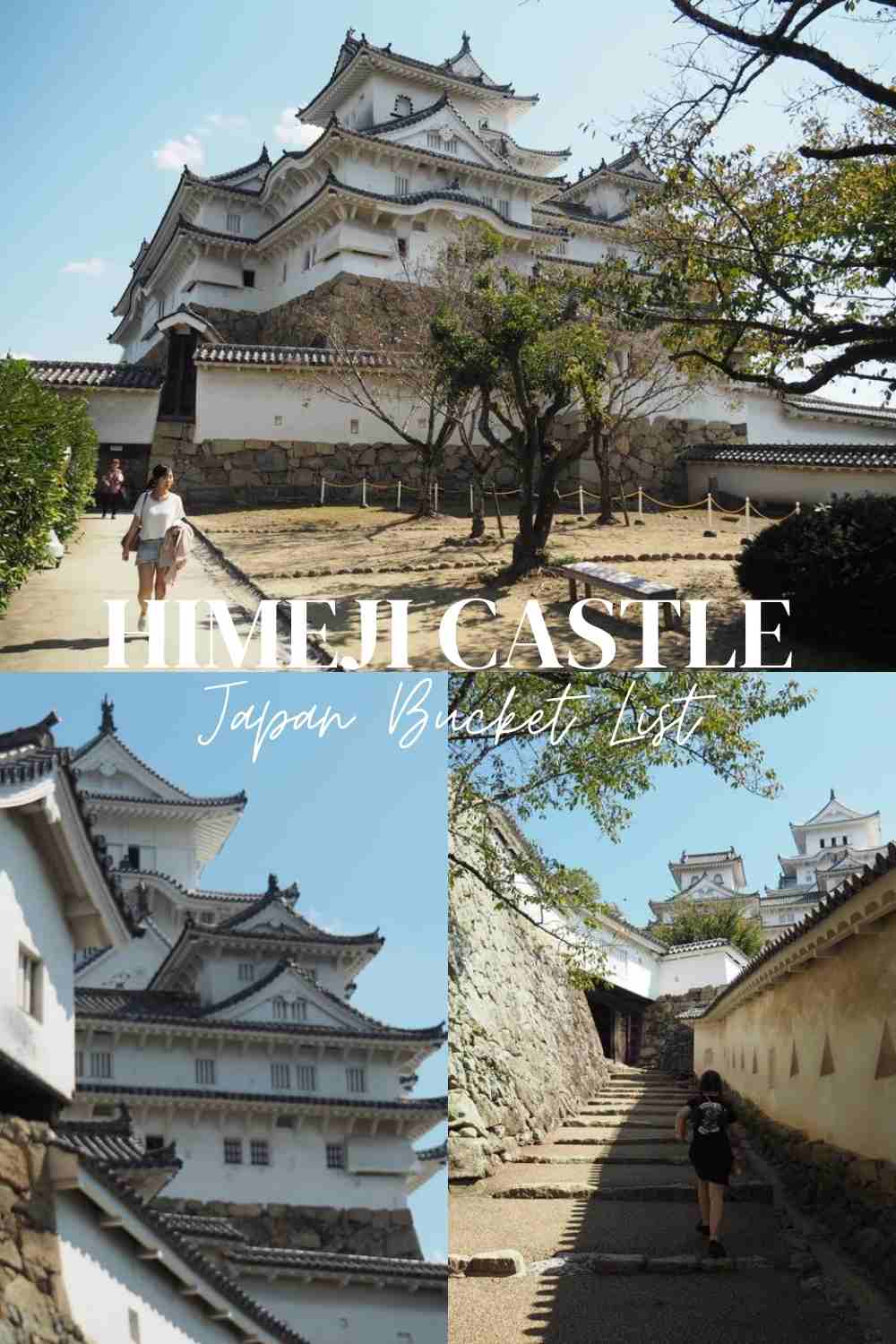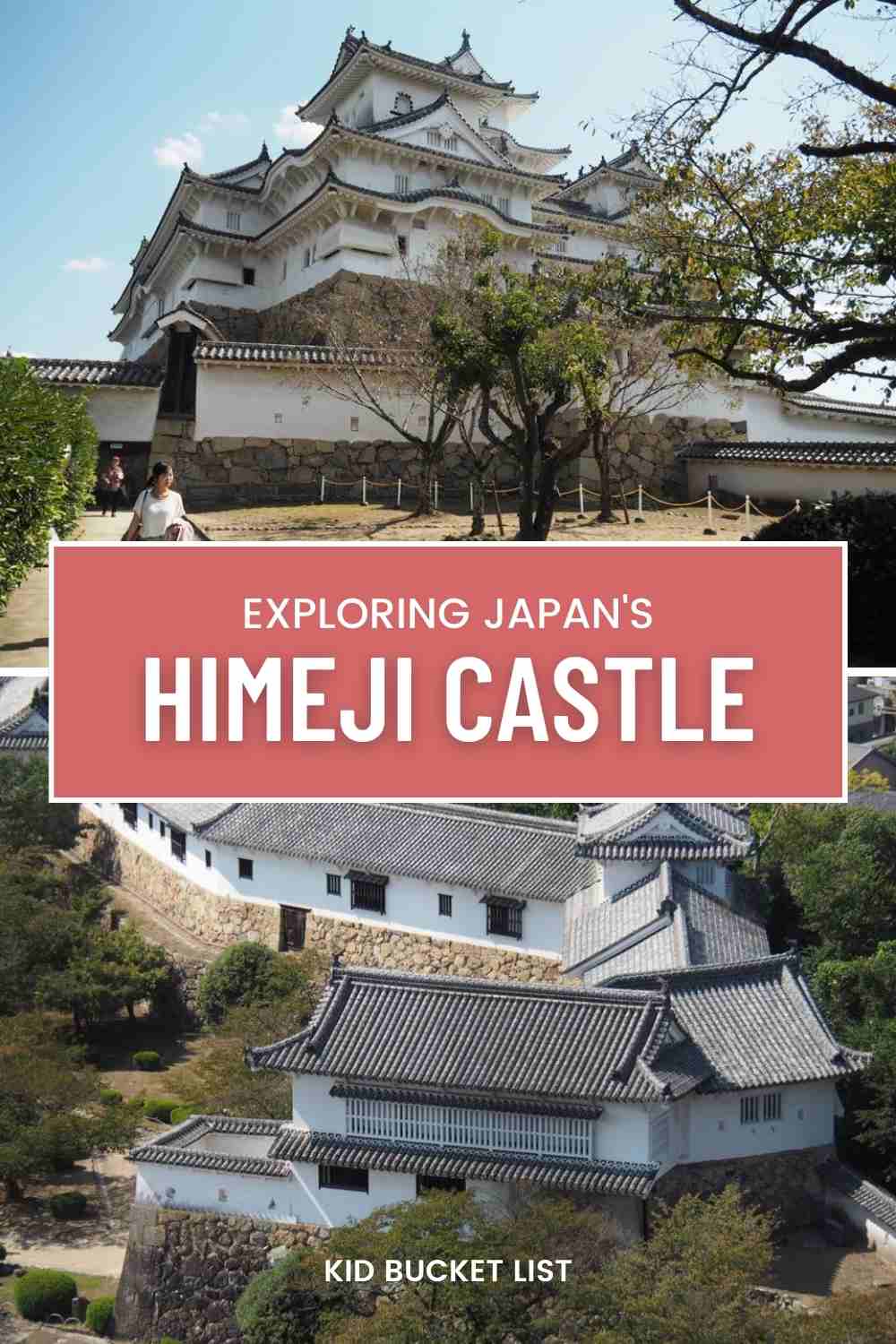Japan’s Himeji Castle (姫路城, Himejijō) also known as White Heron Castle (Shirasagijo), has a rich and storied history dating back over 400 years. Originally built in the 14th century, the castle underwent significant expansions and renovations in the late 16th century, resulting in its iconic form seen today.
Throughout its existence, Himeji Castle has withstood wars, natural disasters, and the passage of time, earning it the distinction of being one of Japan’s most well-preserved and magnificent feudal castles, recognized as a UNESCO World Heritage site.
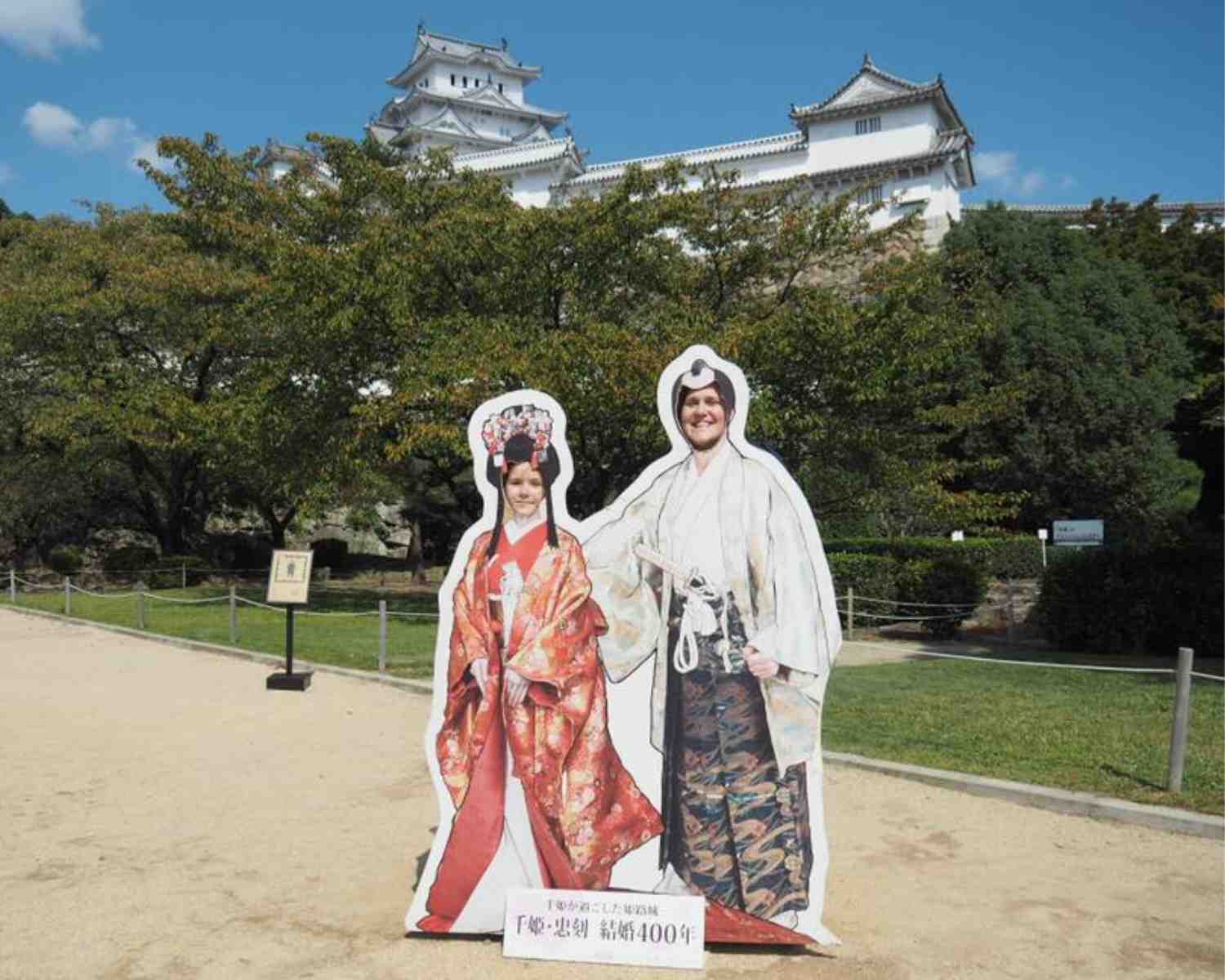
Our family planned to visit on our second trip to Japan. We added it to our itinerary on the way to Osaka from Hiroshima. Having forwarded our bags to our new hotel, a side trip to Himeji Castle along the way was super easy.
We hope this post helps you plan your trip to Himeji Castle whilst also providing you with background into the history of the castle.
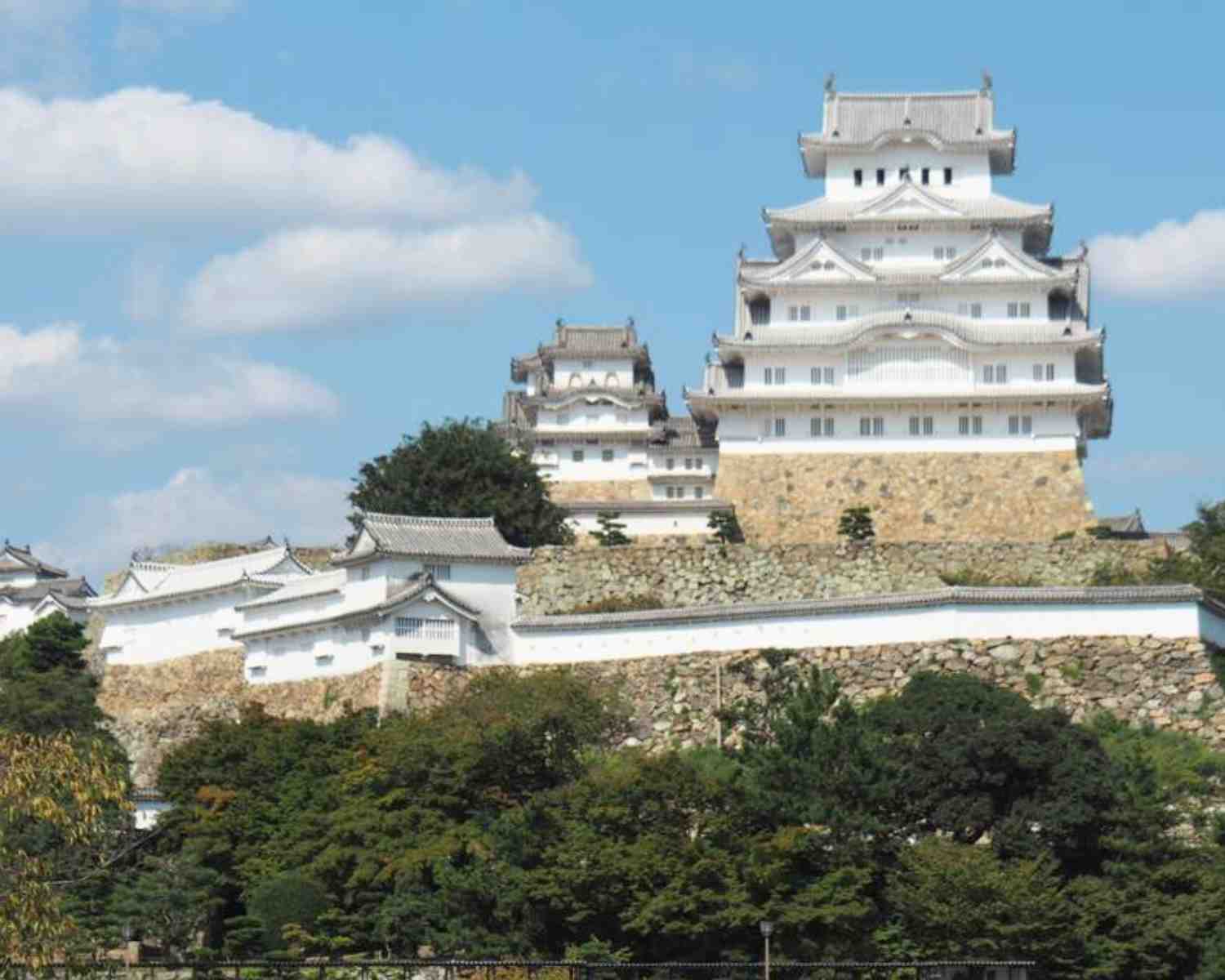
Exploring Himeji Castle in Japan with Kids
Table of Contents
Himeji Castle History
Himeji Castle’s rich history spans centuries of construction and refinement. Originally established in 1333 as Himeyama Castle, it underwent significant changes under the rule of Toyotomi Hideyoshi, who transformed it into a larger and more elaborate structure in 1580. Further enhancements were made between 1581 and 1609 by Hideyoshi’s successor, Ikeda Terumasa, resulting in the distinctive appearance that the castle is known for today.
In 1617, Himeji Castle reached its completed form, serving as the residence of the Ikeda clan. It survived the turbulent Meiji Restoration period in the late 19th century when many castles were dismantled. Instead, it was decommissioned as a military stronghold and, in 1931, gained recognition as a National Treasure of Japan.

Himeji Castle’s enduring significance led to its inscription as a UNESCO World Heritage site in 1993. From 1993 to 2015, Himeji Castle underwent an extensive restoration project, ensuring the preservation of its original appearance and structural integrity.
Today, Himeji Castle stands as a remarkable testament to the architectural brilliance of early 17th-century Japanese castles. It is arguably Japan’s best-preserved representation of this era, encompassing a grand total of 83 buildings. This magnificent structure showcases highly advanced defence systems and ingenious protective mechanisms that date back to the beginning of the Shogun period, highlighting the castle’s historical significance and architectural excellence.
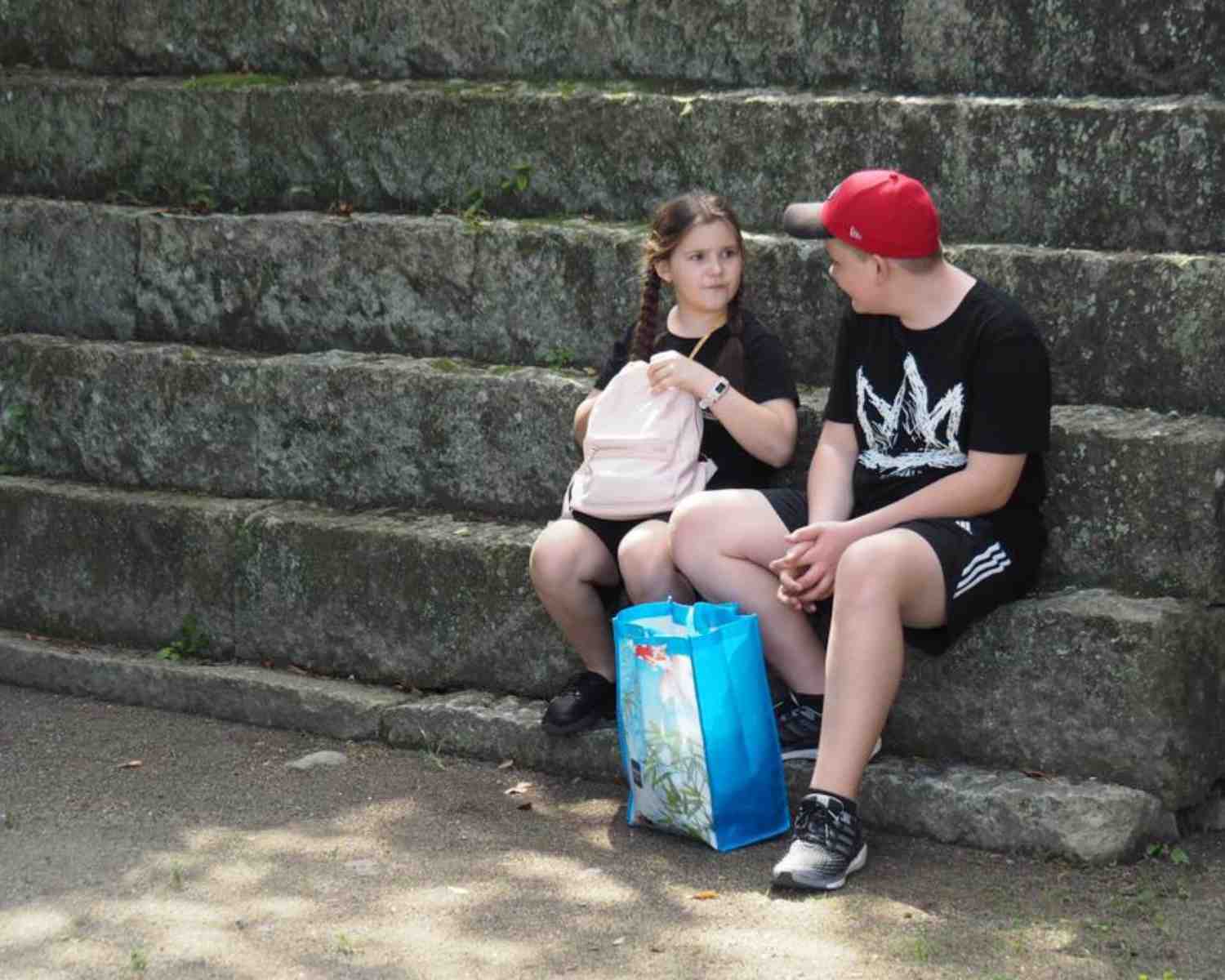
When Was Himeji Castle Built?
Himeji Castle has undergone numerous refinements since it was first developed back in 1333. Here’s a basic timeline that reveals the many additions:
1333
A fortification known as Himeyama Castle is built on the site where Himeji Castle stands today.
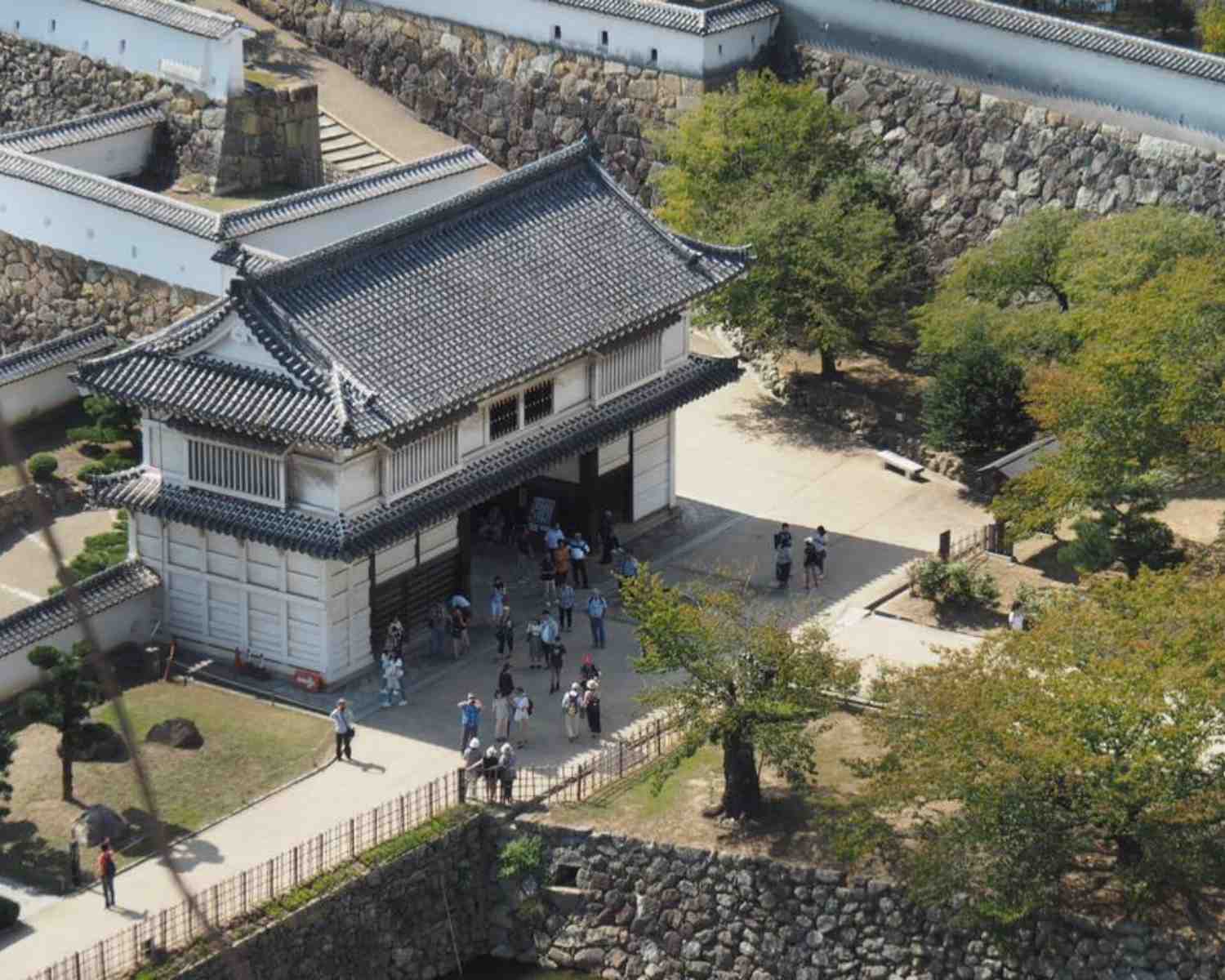
1580
Toyotomi Hideyoshi, a powerful daimyo, takes control of Himeyama Castle and begins its transformation into a larger and more elaborate castle structure.
1581-1601
Extensive renovations and expansions are carried out under the orders of Toyotomi Hideyoshi and his successor, Ikeda Terumasa. The castle undergoes a significant transformation, including the construction of multiple towers, walls, gates, and defensive structures.
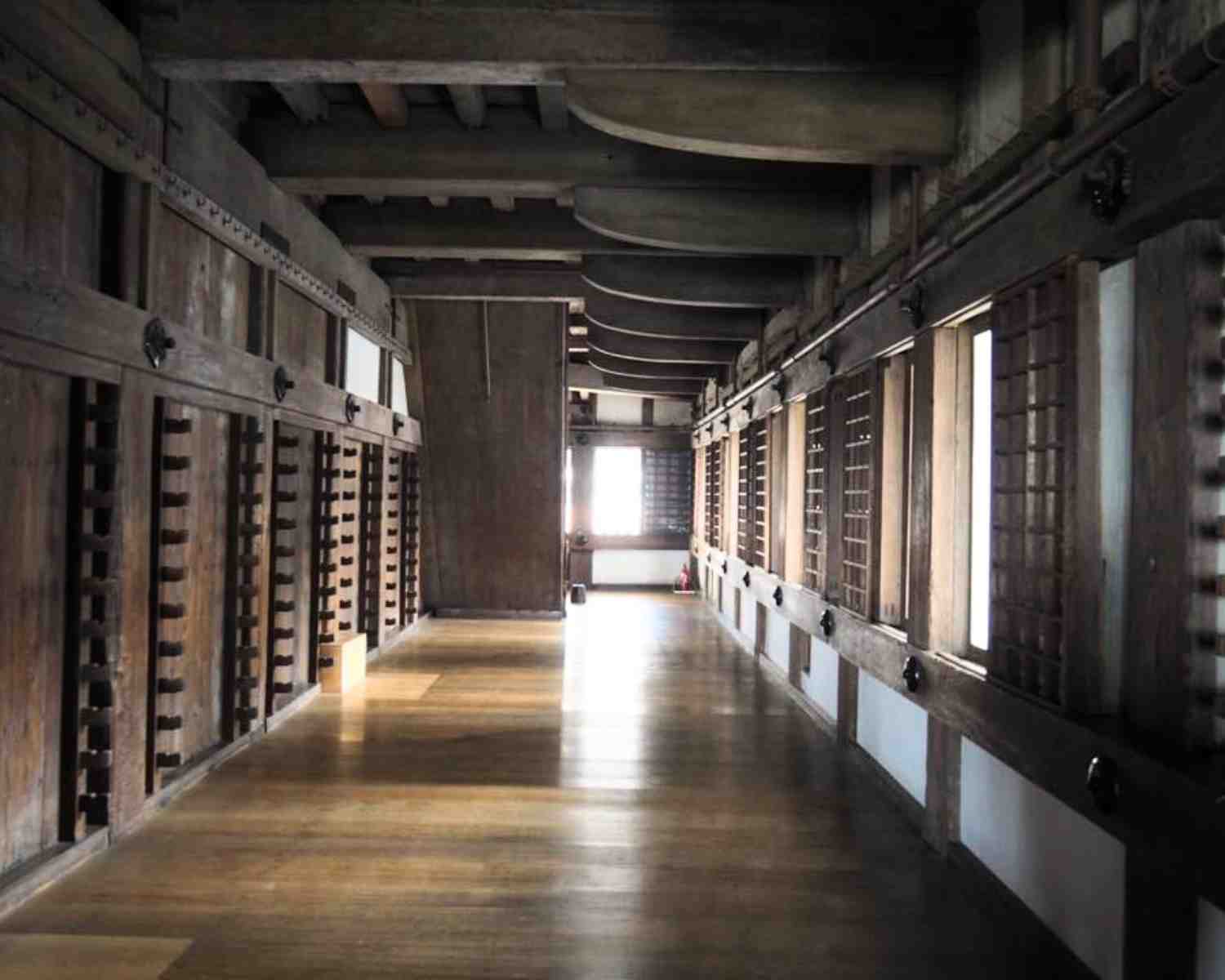
1601-1609
Further enhancements and refinements are made to Himeji Castle, including the addition of more defensive features and architectural details. The castle takes on its distinctive appearance which is largely preserved to this day.
1617
The final touches are completed, and Himeji Castle reaches its completed form. The castle becomes the primary residence of the Ikeda clan, who oversee its maintenance and protection.
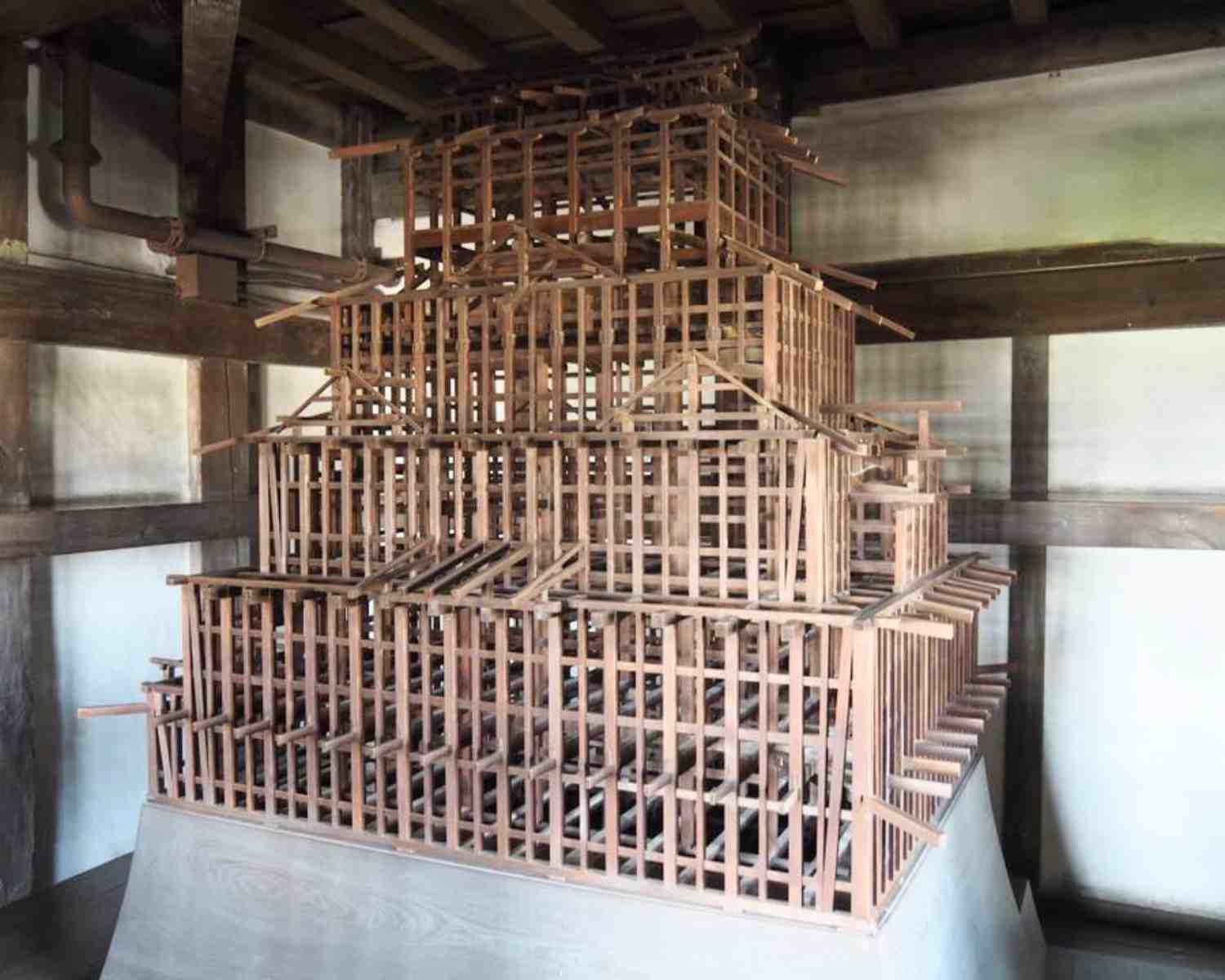
1868
Following the Meiji Restoration, Himeji Castle is decommissioned as a military stronghold. It escapes destruction during this turbulent period when many castles were dismantled.
1931
Himeji Castle is designated as a National Treasure of Japan due to its historical and cultural significance.
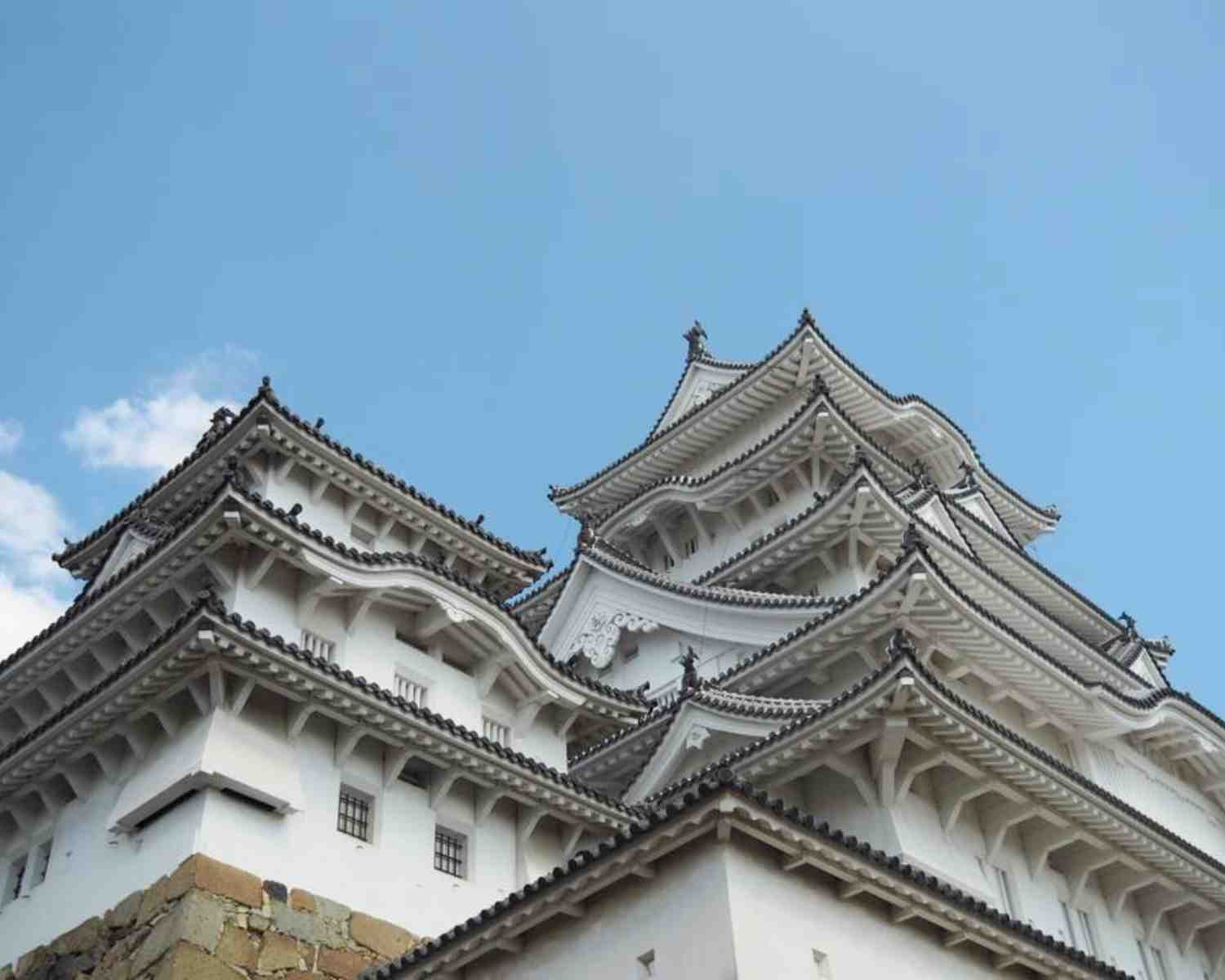
1993-2015
Himeji Castle undergoes a massive restoration project, aimed at preserving its original appearance and structural integrity. The intricate process involves repairing and replacing damaged parts, reinforcing foundations, and restoring faded paintwork.
1993
Himeji Castle is inscribed as a UNESCO World Heritage site, recognizing its exceptional value as an architectural and historical monument.
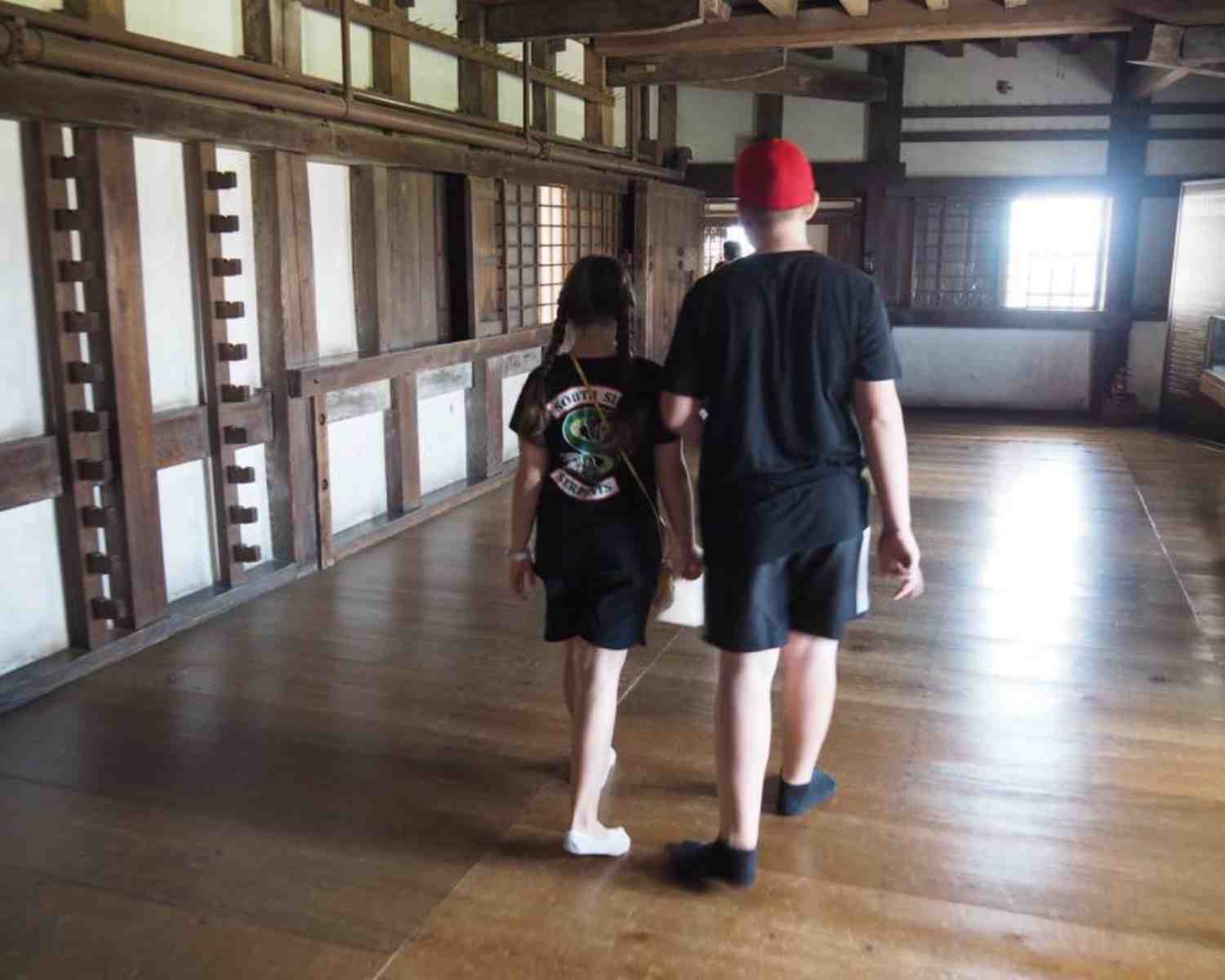
Himeji Castle Defence System
The defence system of Himeji Castle is a remarkable feat of engineering and strategic planning, designed to protect the castle from potential attacks. It consists of several key elements:
Multi-tiered Walls
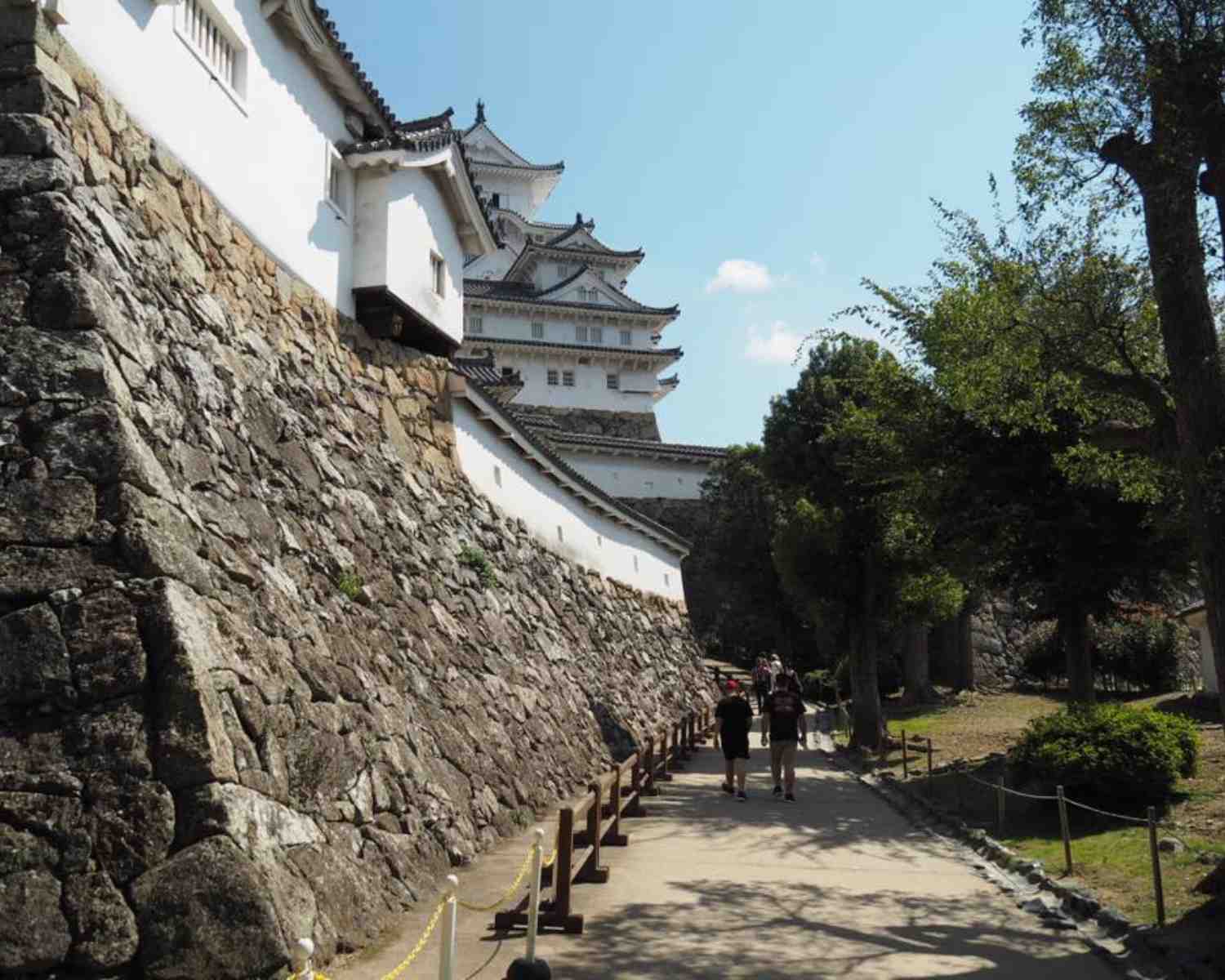
Himeji Castle features a series of concentric walls, forming multiple defensive layers. The walls are constructed of thick stone and plaster, making them highly resistant to fire and projectiles. These walls create a labyrinthine path for potential attackers, making it difficult for them to navigate and advance.
Moats and Water Systems

Surrounding the castle are wide moats filled with water, serving as a natural barrier. The moats not only deterred attackers but also provided an additional line of defence against siege towers and battering rams. Cleverly designed water systems enabled the moats to be flooded or drained as needed, further enhancing the castle’s defensive capabilities.
Gates and Entrances
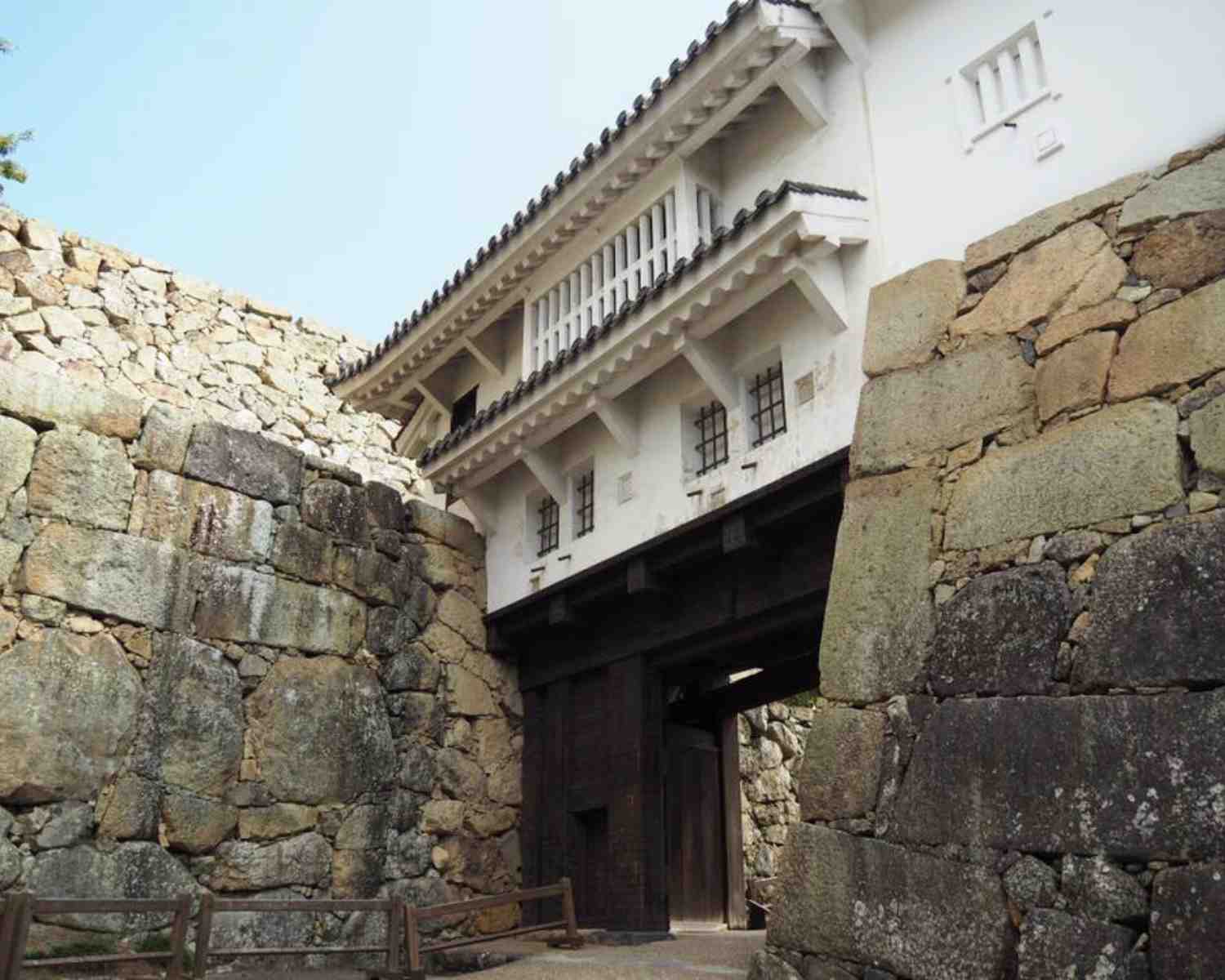
Himeji Castle features several gatehouses and entrances, each equipped with sturdy gates and heavy wooden doors. The gates were strategically positioned to control access to the castle and to create chokepoints for defence. Narrow passages, known as “stone paths,” with sharp turns and low ceilings, made it challenging for attackers to advance and provided advantageous positions for defenders.
Defensive Towers
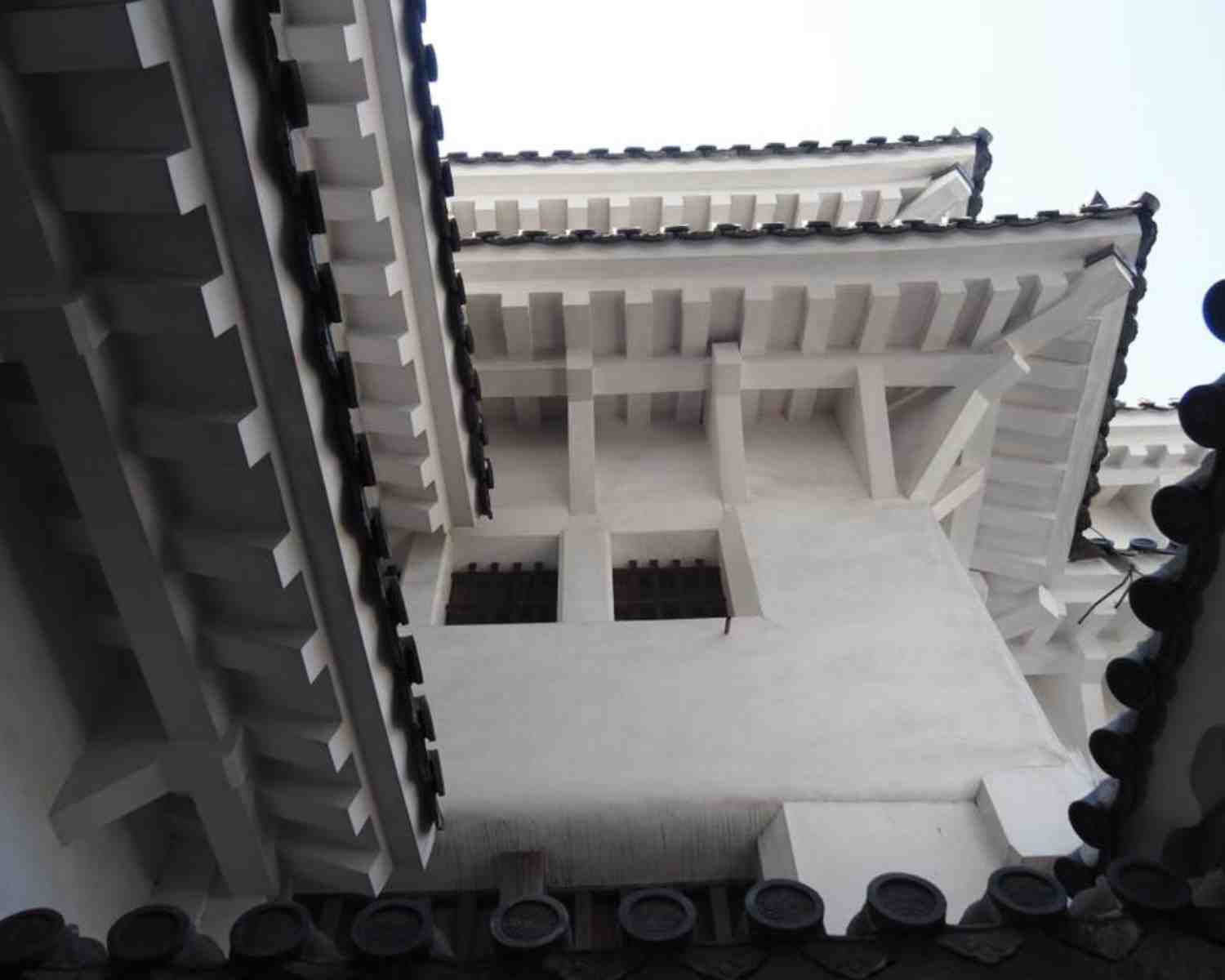
The castle incorporates a network of watchtowers and keeps strategically positioned throughout its grounds. These towers served as lookout points, allowing defenders to spot approaching enemies and coordinate defensive strategies. They also provided vantage points for archers and marksmen to rain down arrows on attackers.
Traps and Hidden Openings
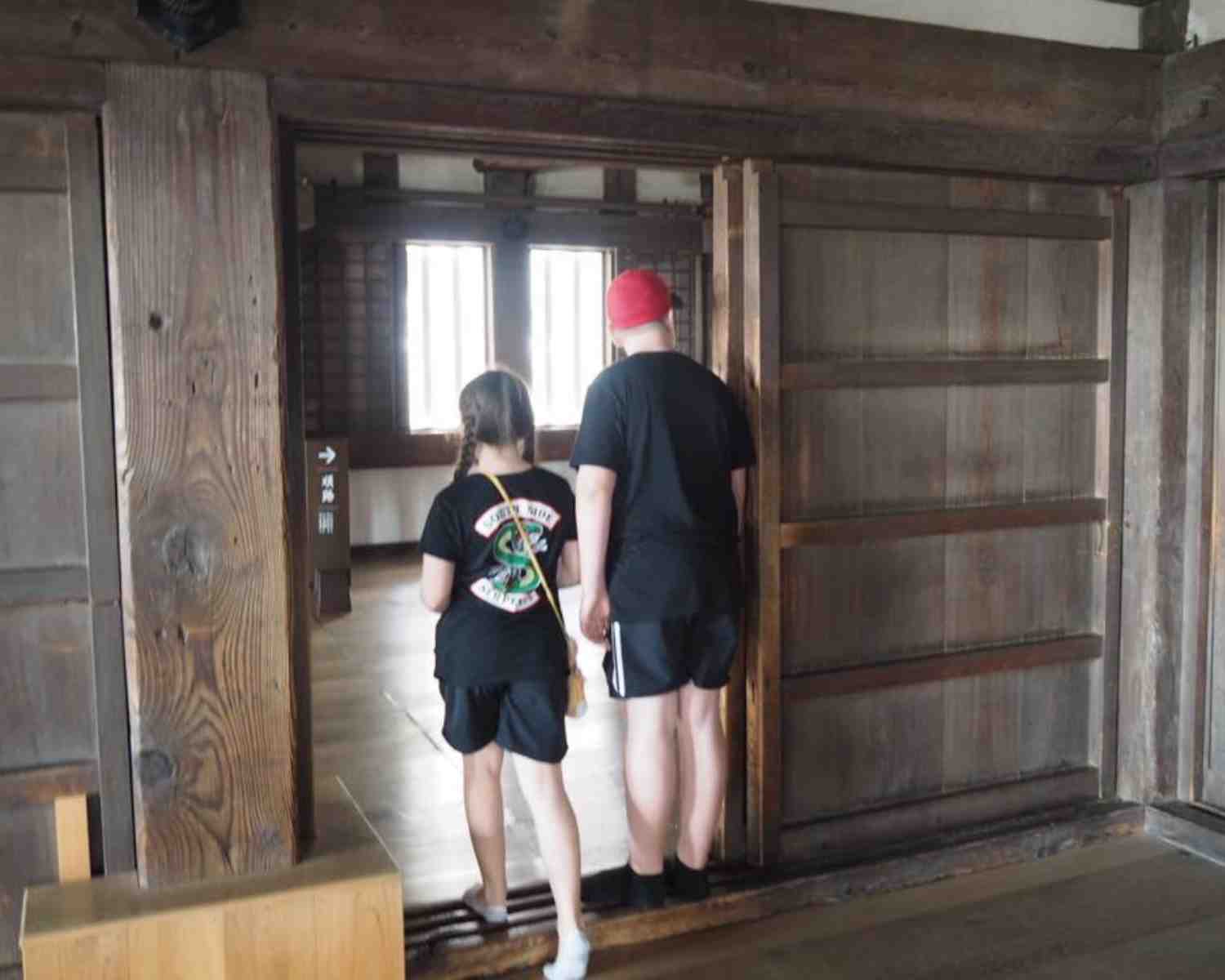
Himeji Castle employed various ingenious traps and hidden openings to surprise and confuse attackers. These included hidden floors, secret escape routes, and concealed openings from which defenders could launch surprise attacks on unsuspecting foes.
The combination of these defensive features made Himeji Castle an imposing stronghold, difficult to penetrate for any would-be invaders. Its intricate layout, coupled with the natural advantages of its location, contributed to the castle’s successful defence throughout history, earning its reputation as one of Japan’s most formidable and impregnable fortresses.
Exploring Himeji Castle as a Family
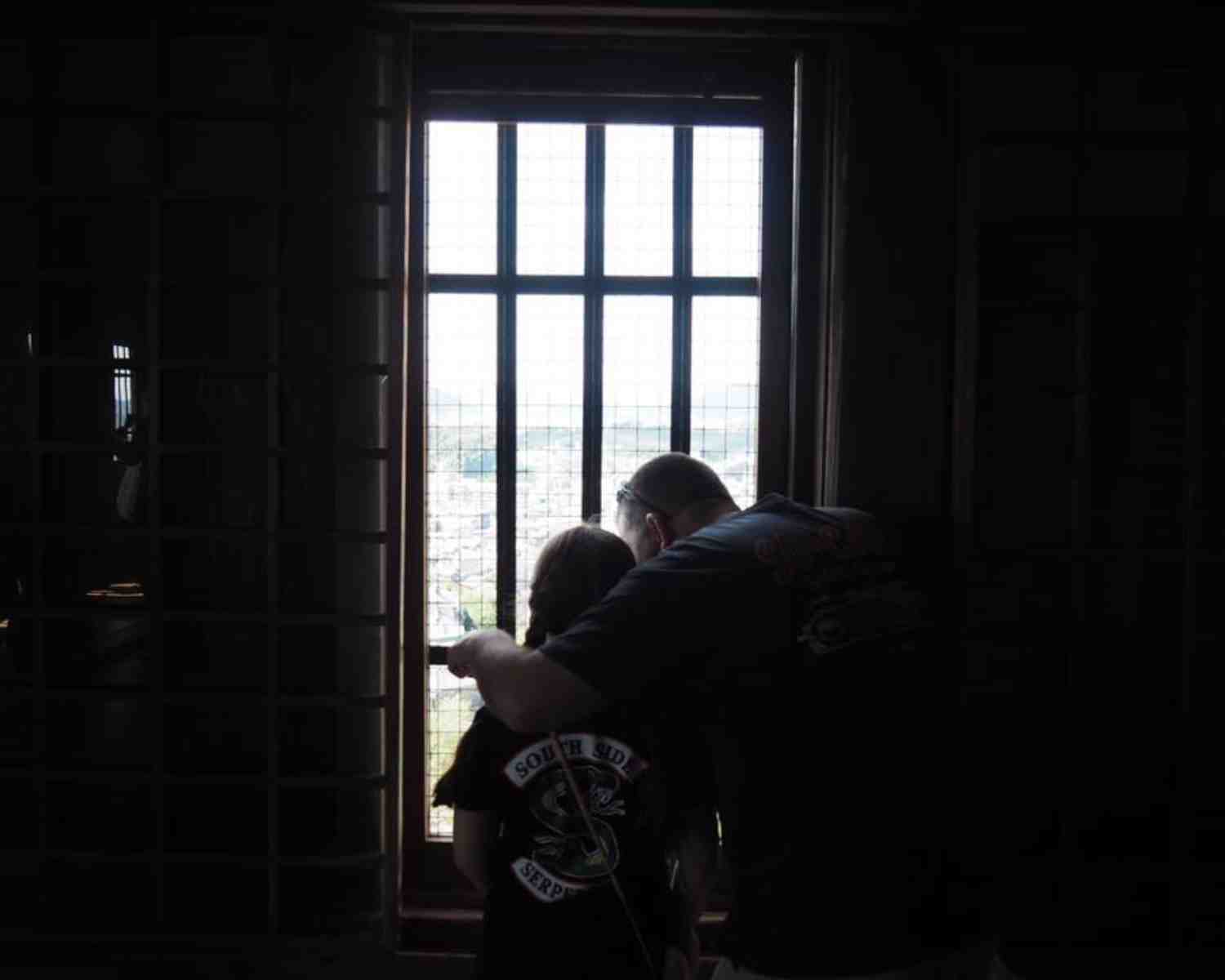
Before you even start your exploration of Himeji Castle be aware that you will need to take off your shoes when you enter the main tower of Himeji Castle and Outer Wall (Hyakken- roka Corridor). Wear good socks and carry some spares just in case the kidlets become dirty!
Be mindful that the climb to the top of Himeji Castle is 111 steps from the bottom to the top of the main tower, with a number of the ladders quite vertical. This is not an accessible space and you will not be able to take your stroller into the castle.
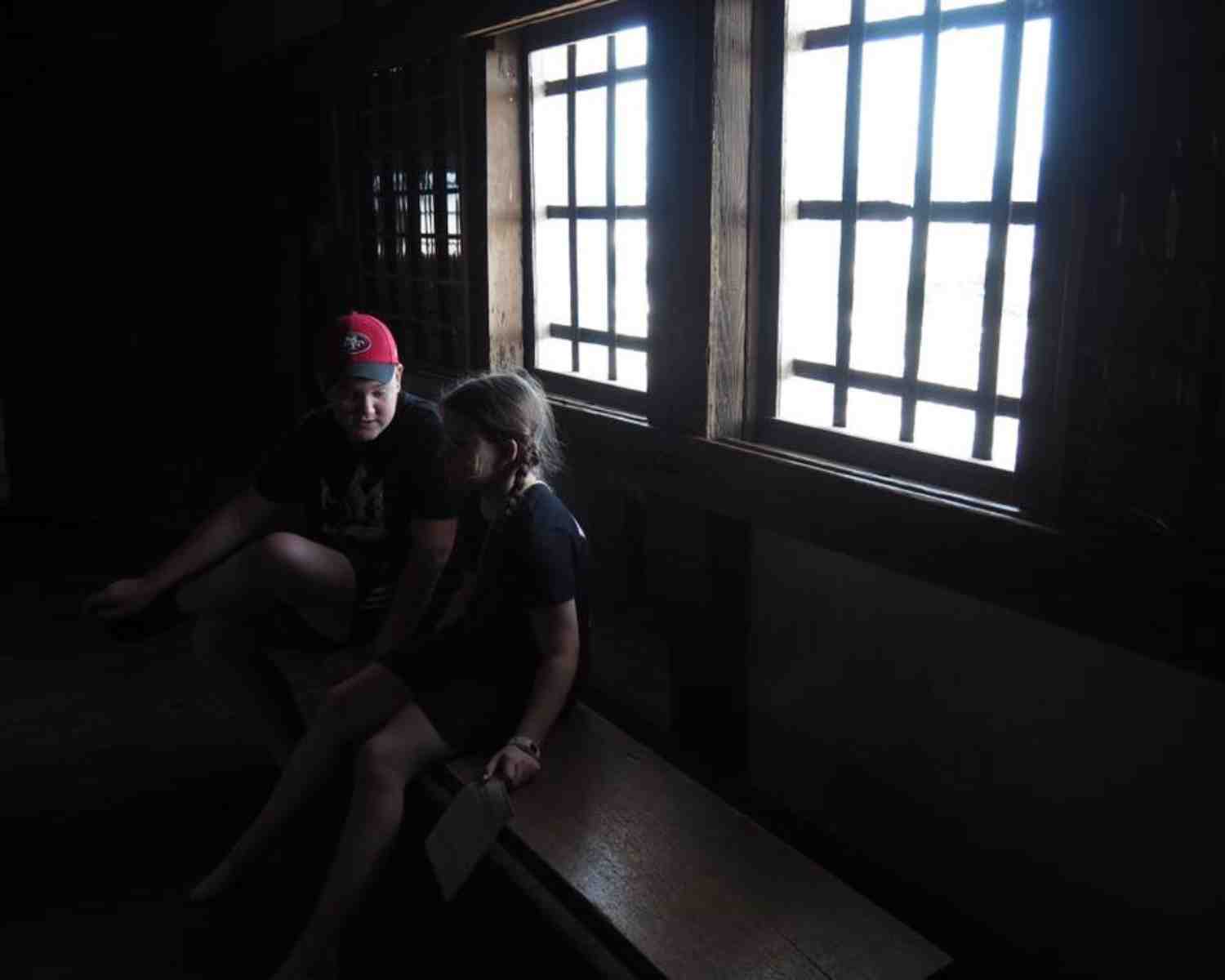
Please also note that Himeji Castle is a popular destination, particularly during cherry blossom season and holidays. On busy days, you may encounter waiting times to enter the main keep, and the number of visitors allowed inside may be limited with the use of numbered tickets.
A word of warning: your day pack may be too big to take into Himeji Castle. We used the coin-operated lockers for the day. Of course, being in Japan, they were safe!
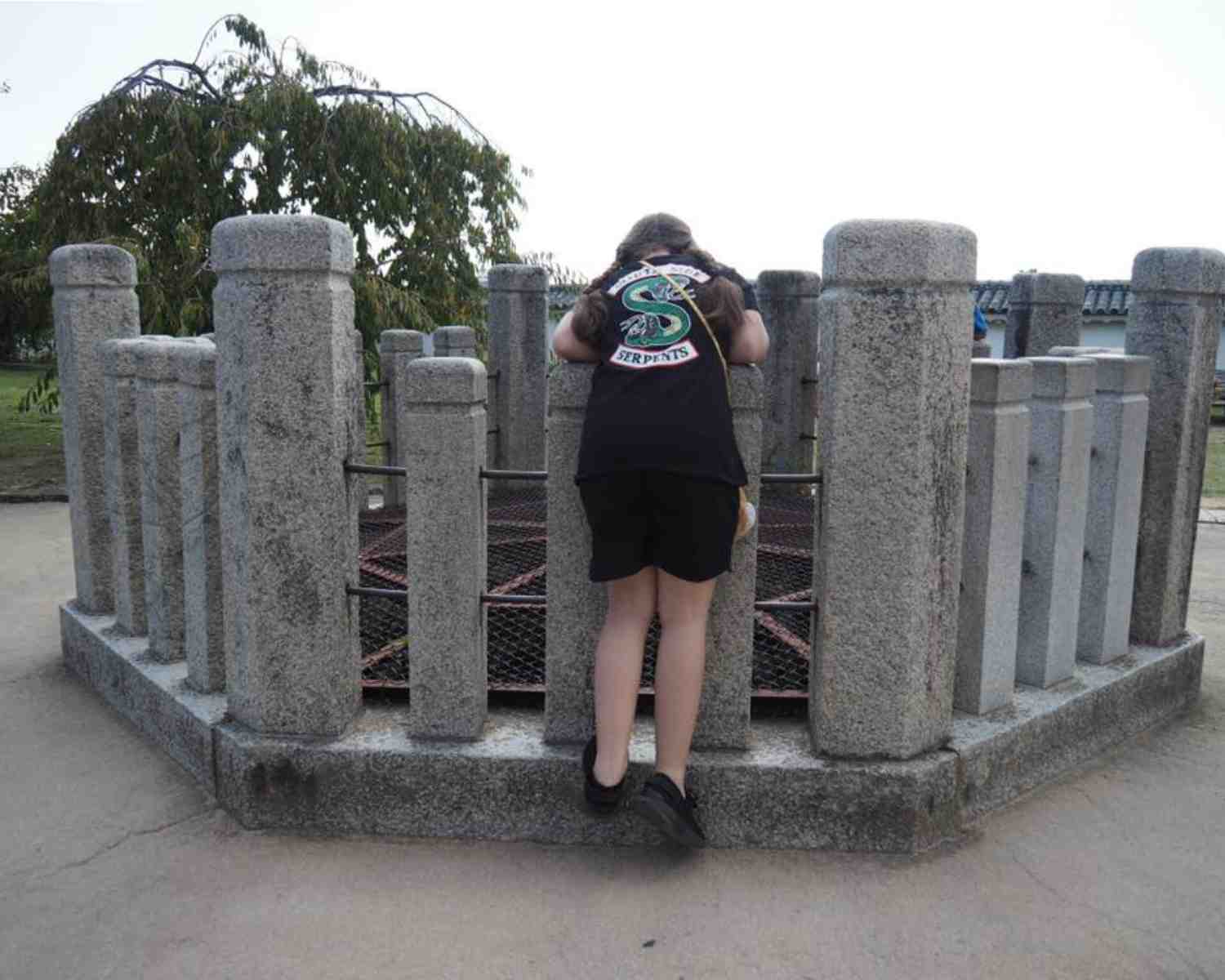
Ready to start exploring Himeji Castle with the kids?
The Sannomaru
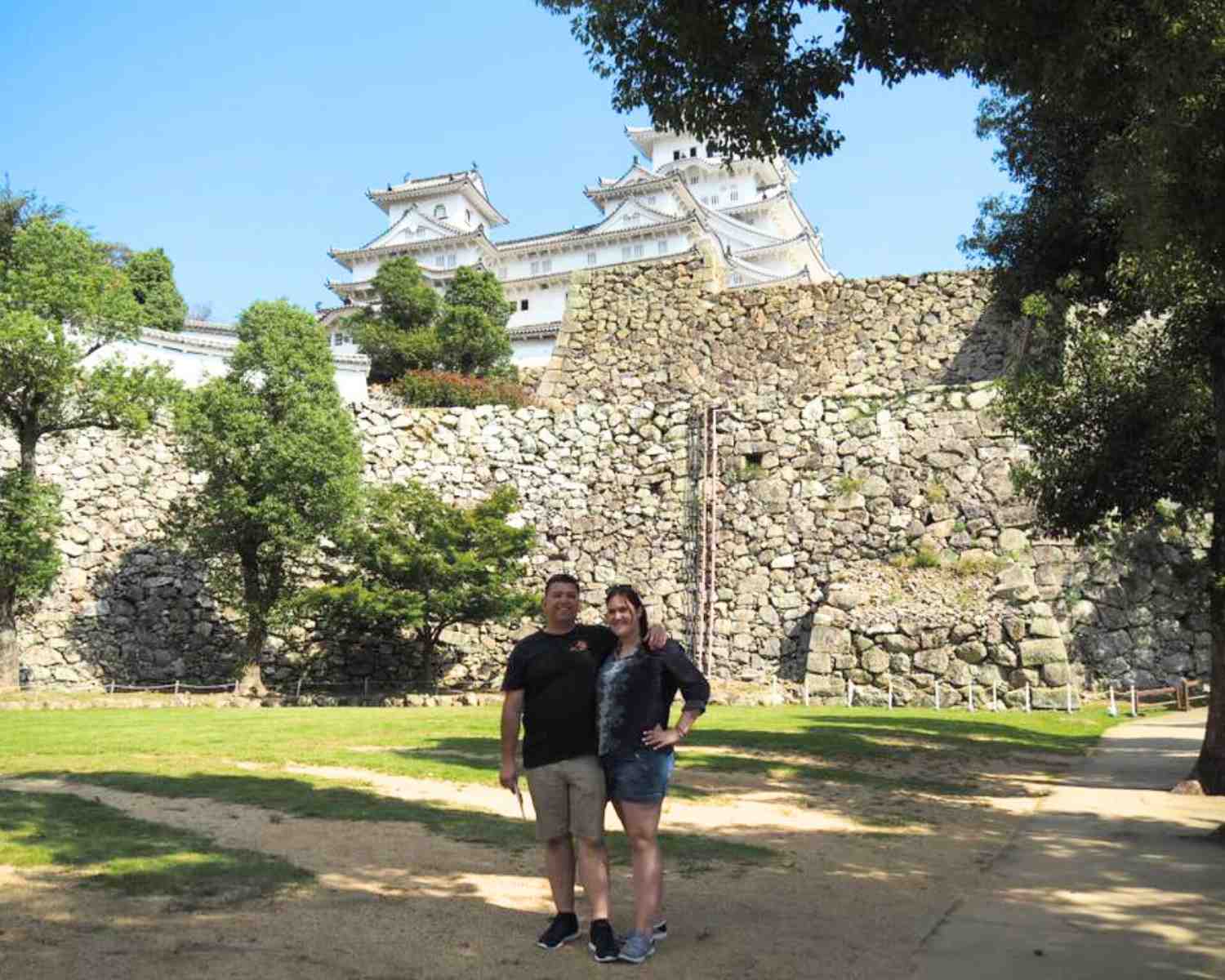
When visiting Himeji Castle as a family, your journey begins at the Otemon Gate into the admission-free third bailey, known as Sannomaru. This area features a large lawn lined with cherry trees, creating a beautiful setting and an excellent spot for viewing cherry blossoms in early April.
The free exploration of the Himeji Castle grounds allows families to immerse themselves in the historical ambience and natural beauty that surrounds this renowned Japanese landmark.
The Pathways to Himeji Castle
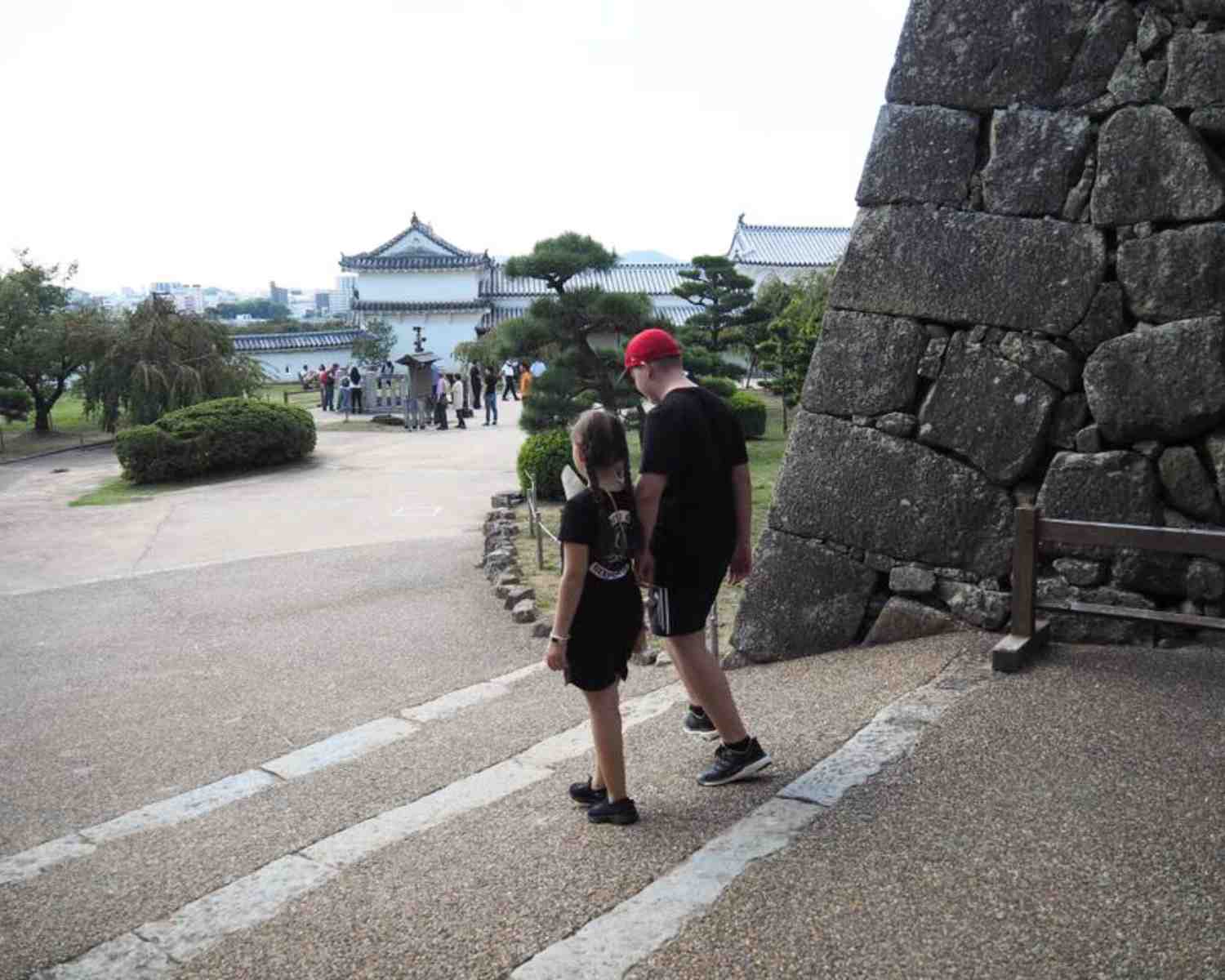
As you explore, you’ll find the entry booth at the far end of the bailey, which marks the entrance to the paid area. From there, your adventure awaits as you navigate the labyrinth-like paths leading to the main keep.
Walled paths, multiple gates, and baileys create a captivating journey designed to slow down and expose attacking forces. At the heart of the castle lies the six-story main keep, a remarkable wooden structure. Notably, it is one of the few castle keeps in Japan with wing buildings, adding to its architectural complexity.
Entering the Main Keep
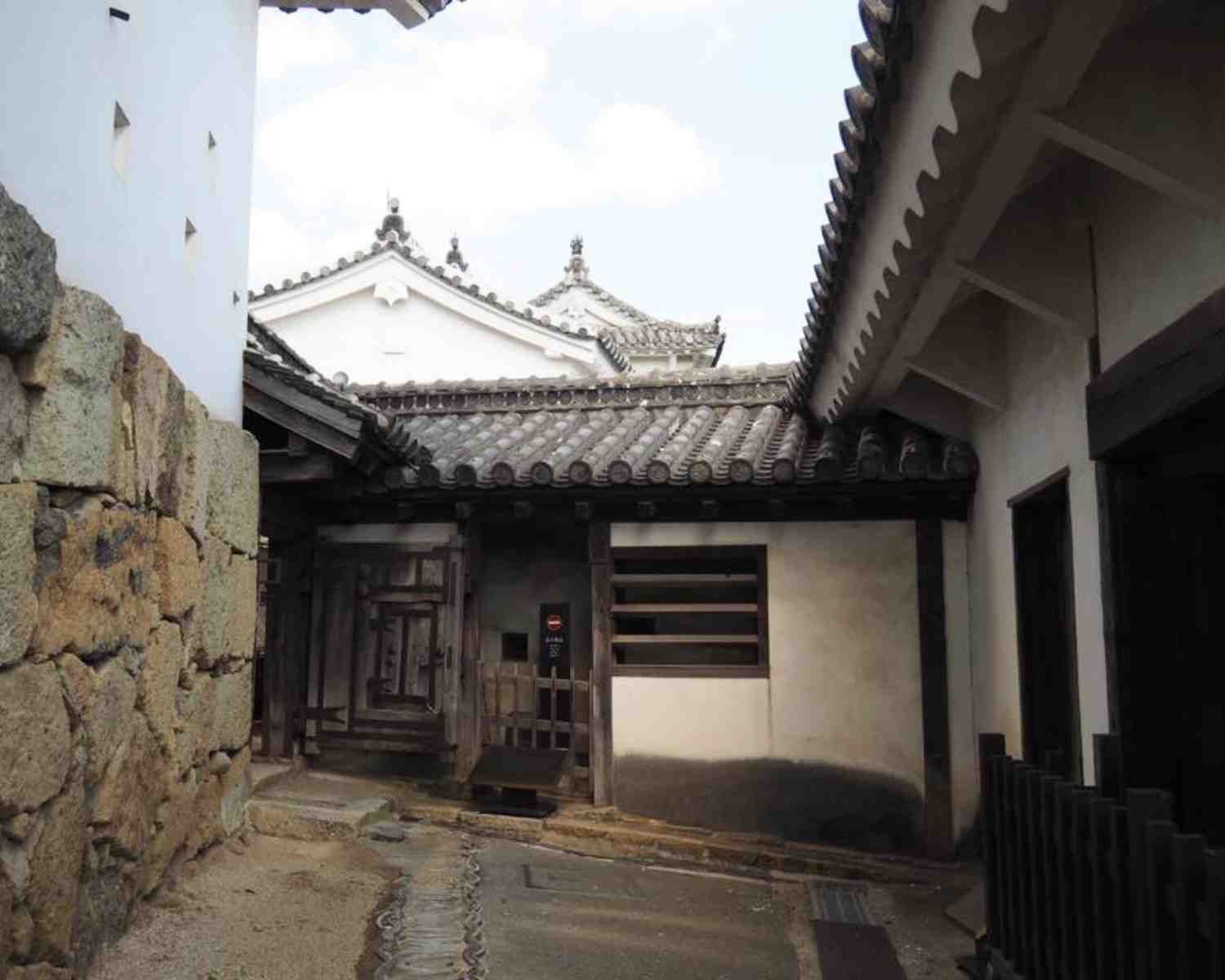
Entering the main keep through the lower floor, you’ll ascend via steep and narrow staircases. Each level becomes smaller as you climb. This can be quite exciting, but you’ll also need to keep an eye on the kids. We went kid, adult, kid adult, to ensure we could assist if they found it tricky.
Although the floors are mostly unfurnished, you’ll find multilingual signs that explain various architectural features, such as portholes, rock chutes, concealed spaces, and renovation efforts undertaken to preserve the castle.
The Top Floor
Reaching the top floor, a small shrine awaits, offering stunning panoramic views in every direction. From here, you can gaze upon the castle’s roofs, admire the maze-like defences, and take in the cityscape of Himeji.
Don’t forget to appreciate the intricate fish-shaped roof ornaments, believed to provide protection against fire.
After exploring the main keep, you can make your way back to the entrance gate.
The West Bailey
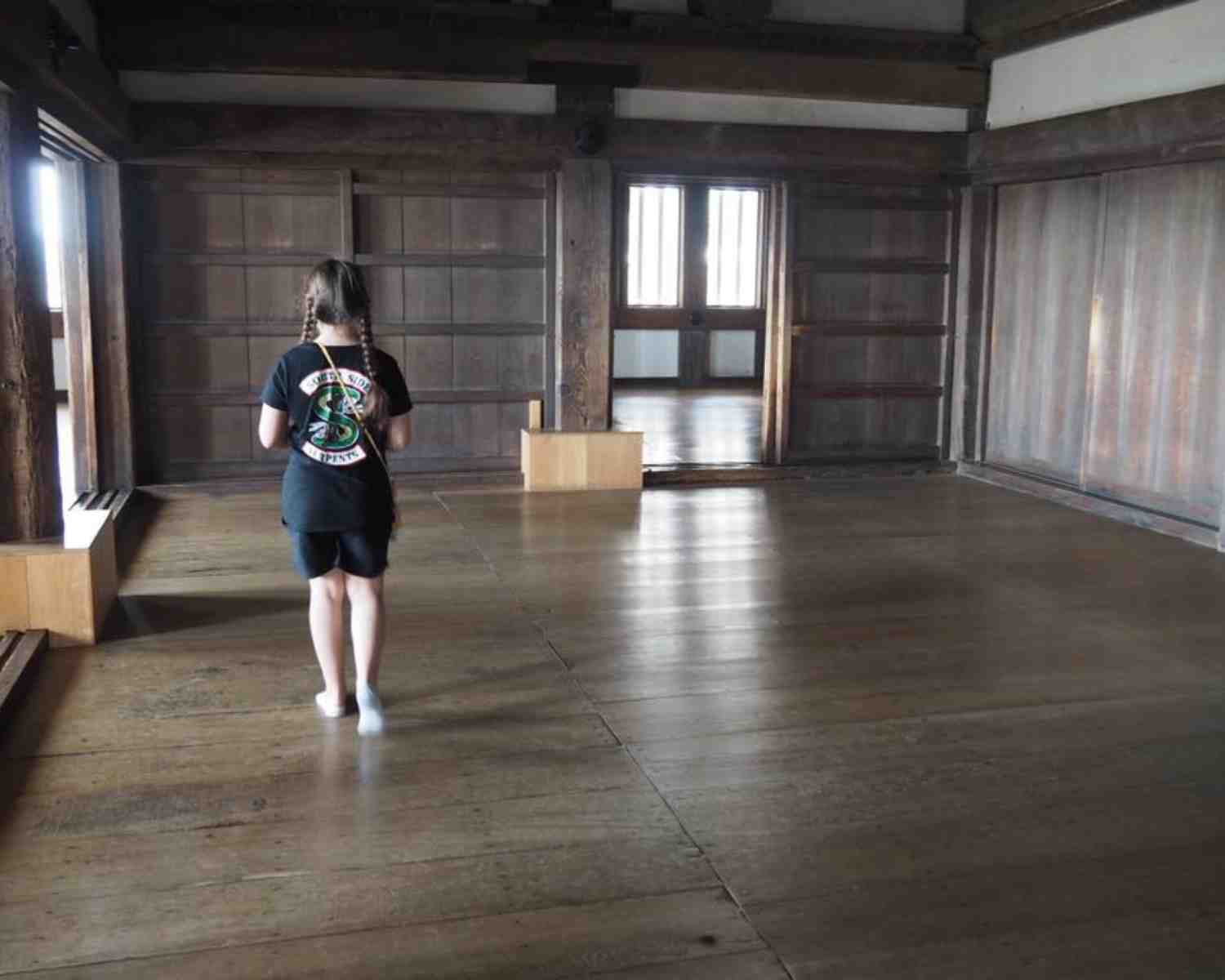 Before leaving the paid area, families have the option to explore the west bailey, known as Nishinomaru. Here, you’ll find a long building with enclosed corridors and unfurnished rooms, offering a different perspective on the main keep and the chance to learn more about the castle’s history.
Before leaving the paid area, families have the option to explore the west bailey, known as Nishinomaru. Here, you’ll find a long building with enclosed corridors and unfurnished rooms, offering a different perspective on the main keep and the chance to learn more about the castle’s history.

Kokoen Garden
Kokoen Garden (好古園, Kōkoen) is next to Himeji Castle, a short walk west of the castle’s main gate (Otemon Gate). Consisting of nine distinct and interconnected gardens, the Edo period-style Kokoen Garden offers a delightful exploration of traditional Japanese aesthetics and horticulture.
Each garden within Kokoen showcases different styles, from a pond garden with gracefully arched bridges to a tea garden with a charming tea house. The gardens are meticulously maintained, showcasing the seasonal beauty of various plants, flowers, and trees throughout the year.
Kokoen Garden not only offers natural beauty but also provides cultural experiences. Visitors can try their hand at traditional tea ceremonies in a dedicated tea house or immerse themselves in Japanese cultural practices and artistry. These immersive activities allow families to deepen their understanding of Japanese traditions and create memorable experiences together.
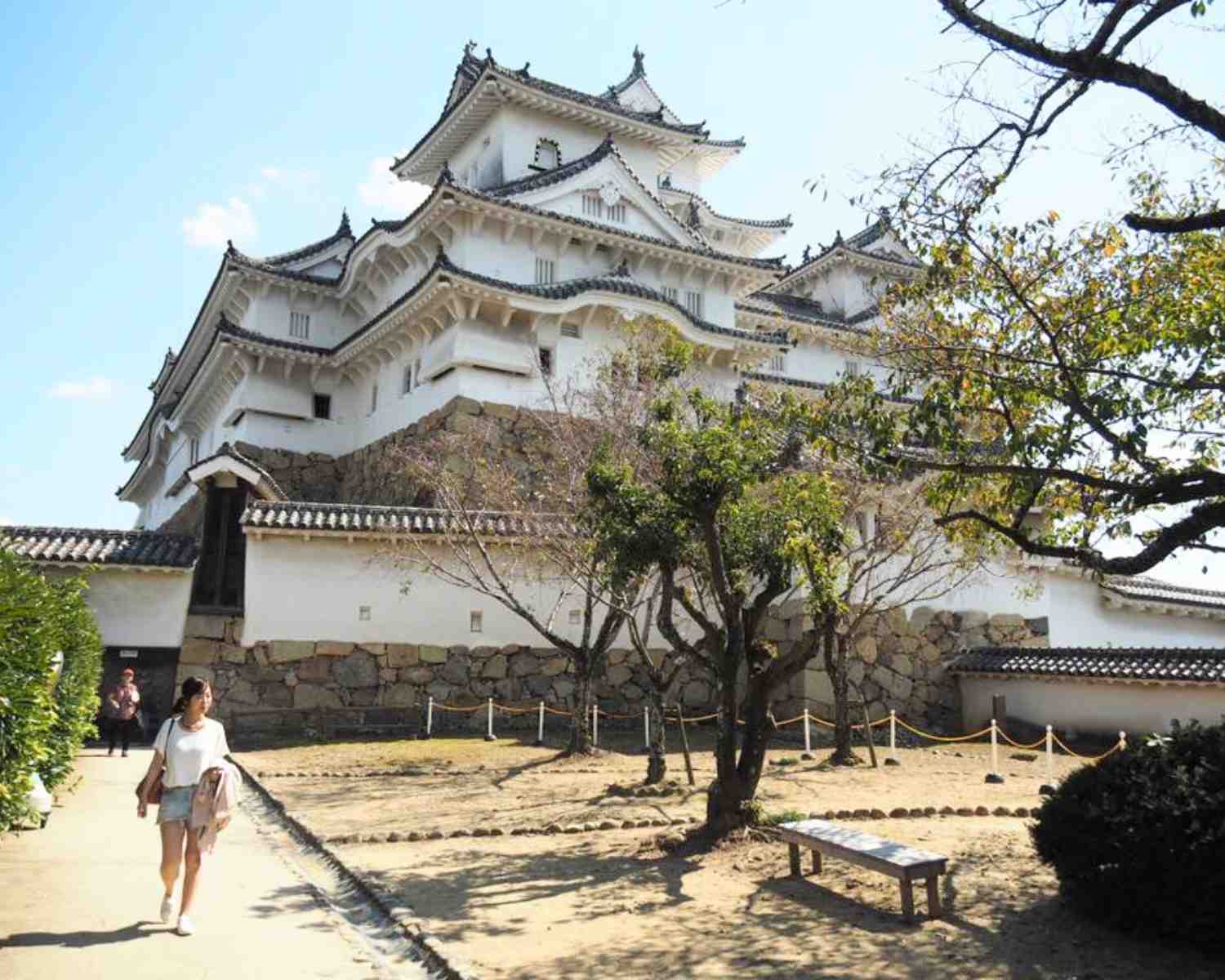
Cherry Blossoms at Himeji Castle
Himeji Castle boasts a captivating sight during sakura season with over 1,000 cherry trees adorning its grounds. While the outer grounds offer free viewing of the blossoms, there is a fee to experience the inner castle grounds’ blooming beauty. However, it’s important to note that the castle can become quite crowded during this time, as locals and tourists alike flock to enjoy picnics and capture stunning photos of the cherry blossoms.
If you are really keen to see the sakura in full bloom at this time of year, I highly recommend arriving early so you can hopefully beat the crowds!
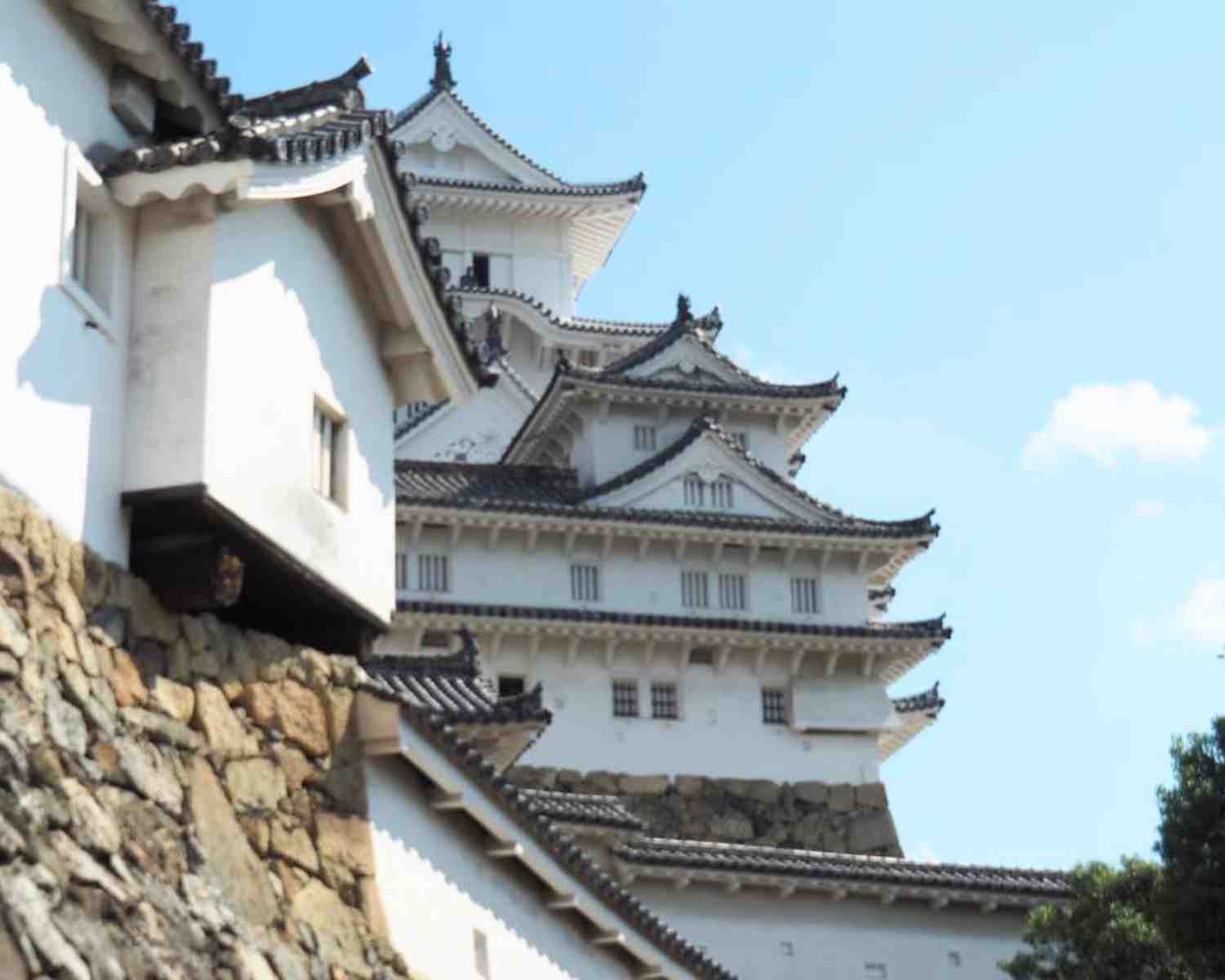
Request a Guide to Help You Explore Himeji Castle
If you are keen to add depth to your Himeji Castle experience you might like to consider booking a guide. The Himeji Castle English Speaking Guide Group offers a guide service at no cost other than funding the guide’s lunch and travel expenses. Head to the request form for full information on this guide service.
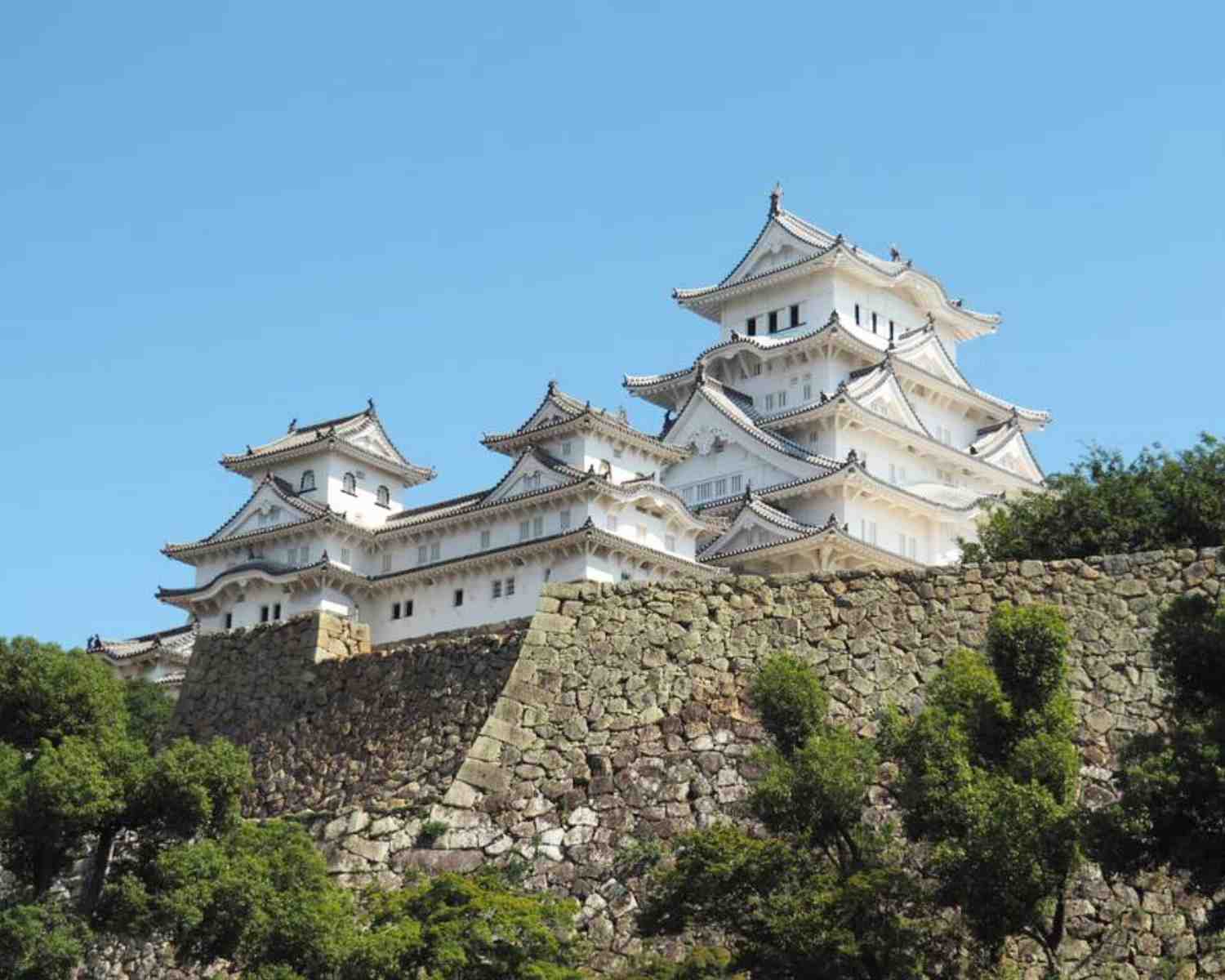
Travelling to Himeji Castle

Osaka to Himeji Castle
Himeji Castle is located approximately 55 kilometres west of Osaka. The distance between Himeji and Osaka makes it easily accessible for day trips or short excursions. Traveling by train, takes approximately 30 minutes on the JR Special Rapid Service from Osaka Station to reach Himeji Station. This proximity allows visitors in Osaka to explore Himeji Castle’s rich history, admire its stunning architecture, and immerse themselves in the castle’s surrounding gardens and the charming atmosphere of Himeji City.

Himeji Castle to Kyoto
Himeji Castle is located approximately 60 kilometres west of Kyoto. The distance between Himeji and Kyoto is super easy if you take the JR bullet train (Shinkansen) with travel time of approximately 30 minutes. This makes it convenient for visitors to explore both Himeji Castle and Kyoto in a single day or incorporate them into their travel itinerary without spending an excessive amount of time in transit.
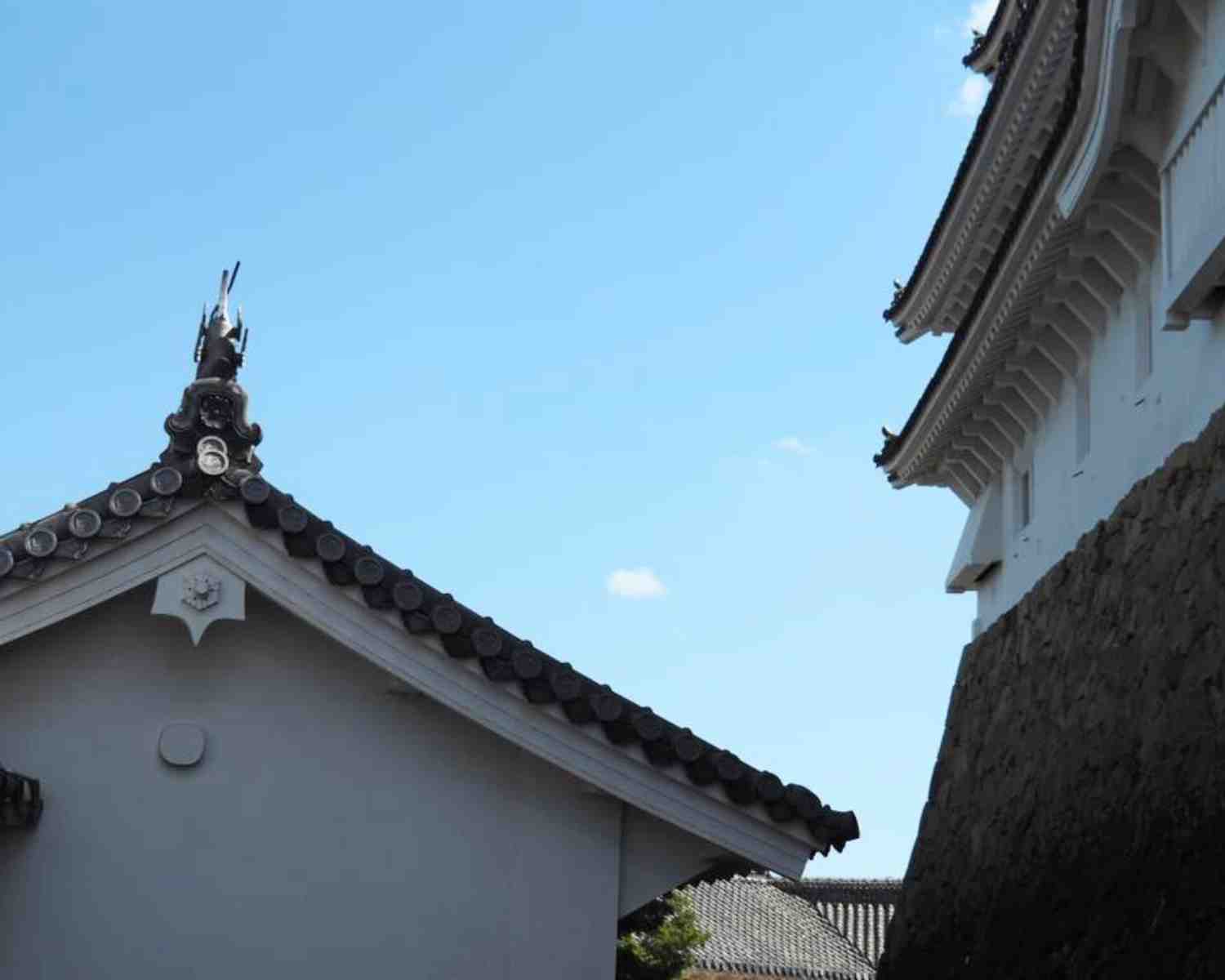
Tokyo to Himeji Castle
Himeji Castle is located approximately 590 kilometres west of Tokyo. The distance between Himeji and Tokyo is significant. The most convenient and efficient way to travel between the two cities is by using the Shinkansen (bullet train) service. Taking the Tokaido-Sanyo Shinkansen from Tokyo Station to Himeji Station, the journey typically takes around 2.5 to 3 hours, depending on the specific train service.
Whilst you could do Tokyo to Himeji Castle and back in a day, it would require at least 6-7 hours of travel time and would be quite fatiguing for a family. This would not be my recommendation. Instead, I would base myself in Osaka, Kyoto or even Hiroshima, and plan to visit Himeji Castle as a day trip from one of these locations.
Head to the official Himejia Castle website for more details.
Pin This
Other Japanese Castles to Visit
Castle in Kanazawa

